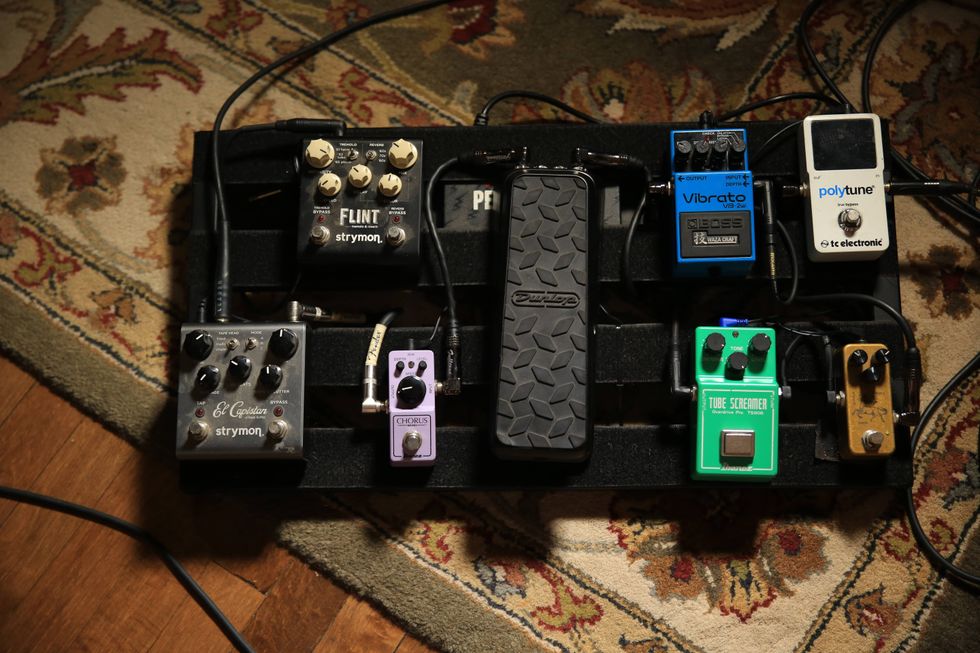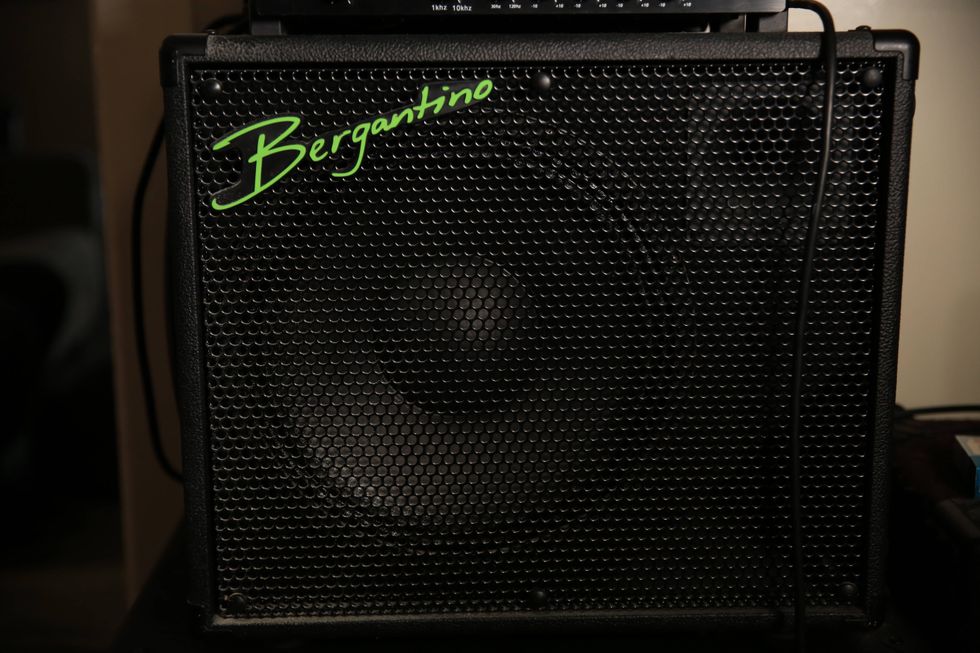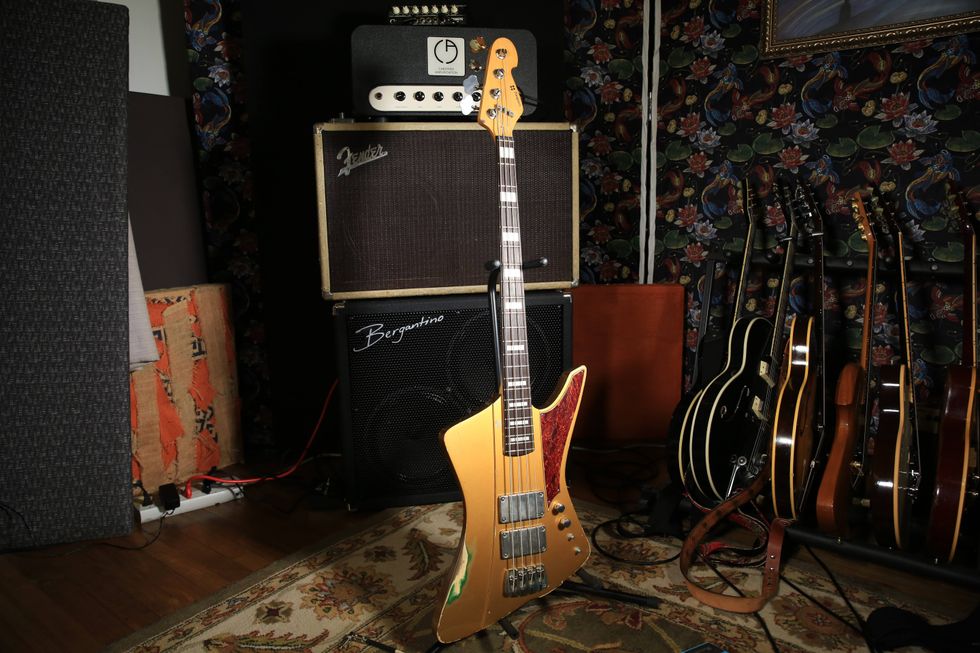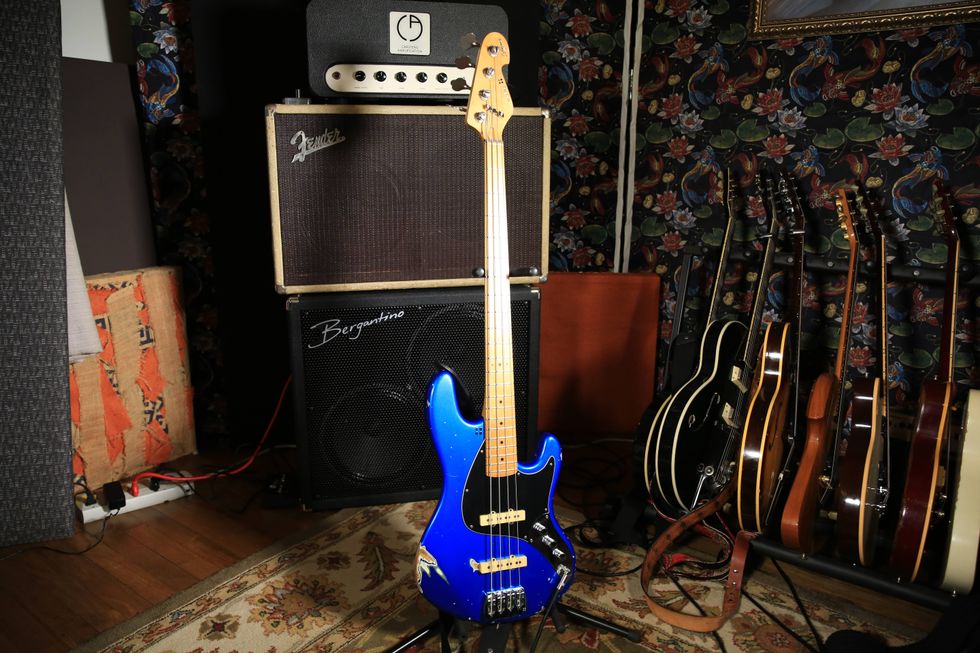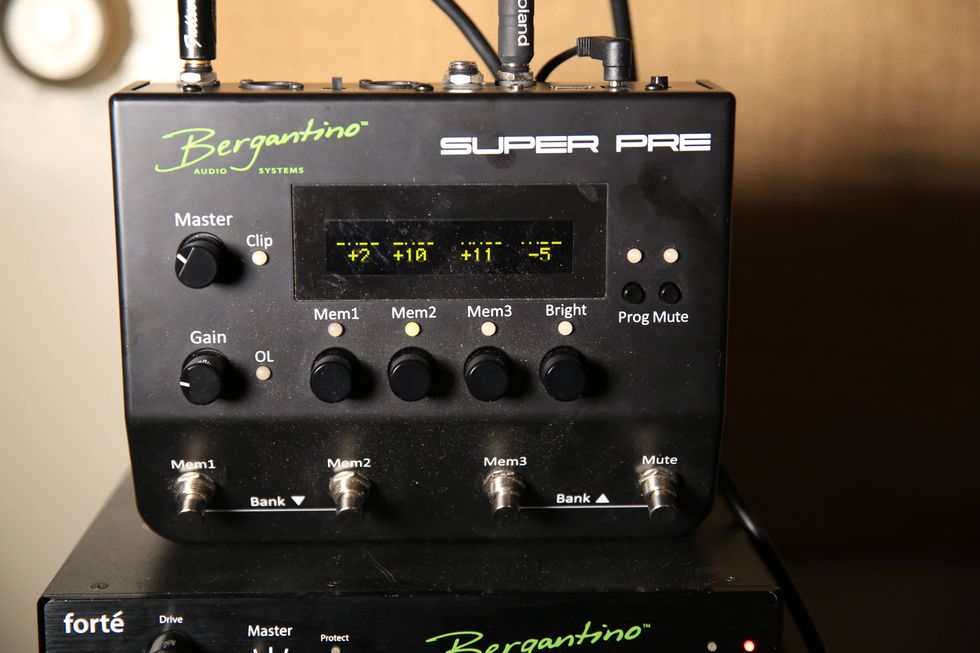The in-demand Nashville session player unveils what comes with him when he leaves the studio.
Recording artist, hit songwriter, and sought-after session player Jedd Hughes invited PG’s John Bohlinger to his soundcheck before his gig at Nashville’s 3rd and Lindsley. Hughes came in with a home-made T-style, a vintage hollowbody, and some custom acoustics. Check it out.
Brought to you by D’Addario: https://ddar.io/wykyk-rr
Homebrew Tele
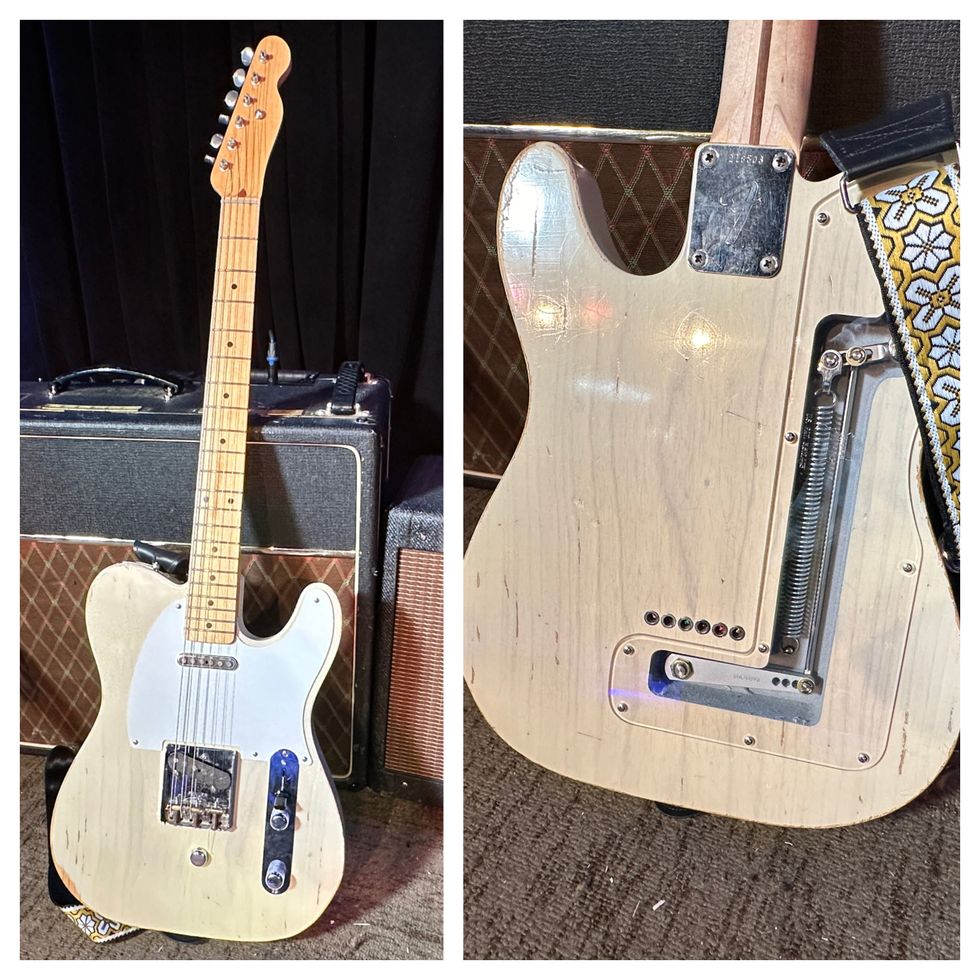
Hughes built his Tele using a one-piece lightweight ash body with a Gene Parsons long-pull B-bender. Hughes shaped the maple neck to a soft V profile using StewMac tools. The pickups were both designed by Ron Ellis: There’s a 50B in the bridge and a Killa in the neck position to match the 50B. The harness is from a 1955 Fender lap steel. All of his electrics are strung with D'Addario .010-.046s.
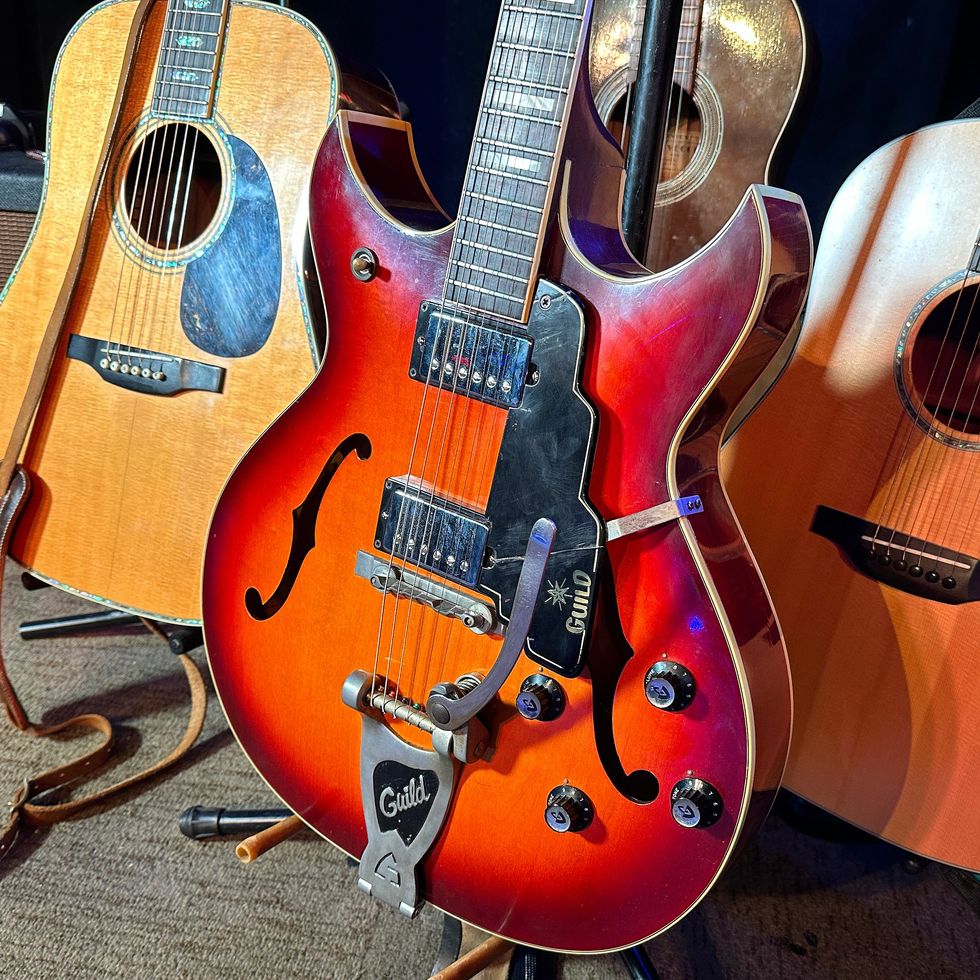
This 1967 Guild ST-403 Studio hollowbody was chopped to make room for full-size humbuckers.
Hughes' Acoustics
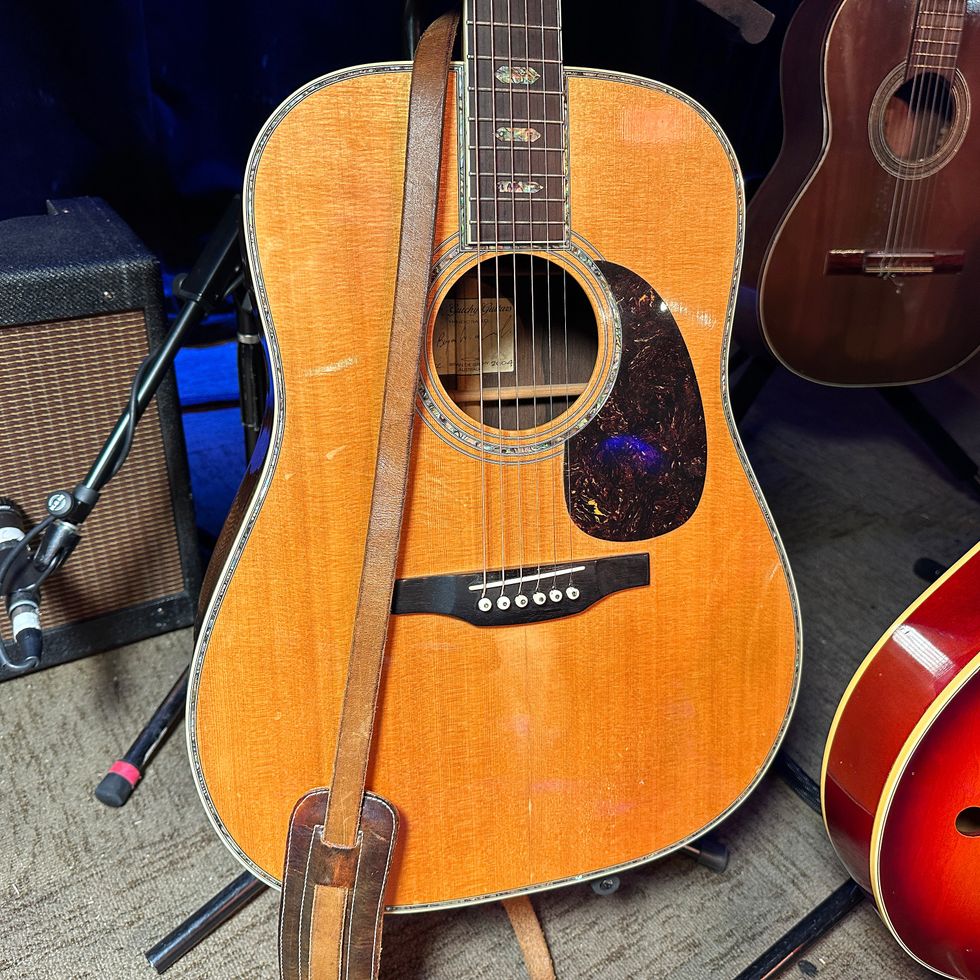
This 2004 DeGruchy was built specifically for Hughes, made to replicate a golden-era Martin D-45. The acoustics are strung with D'Addario .012-.052 sets, which Hughes strikes with Fender medium picks. All acoustics have K&K Sound Pure Mini pickups running through them.
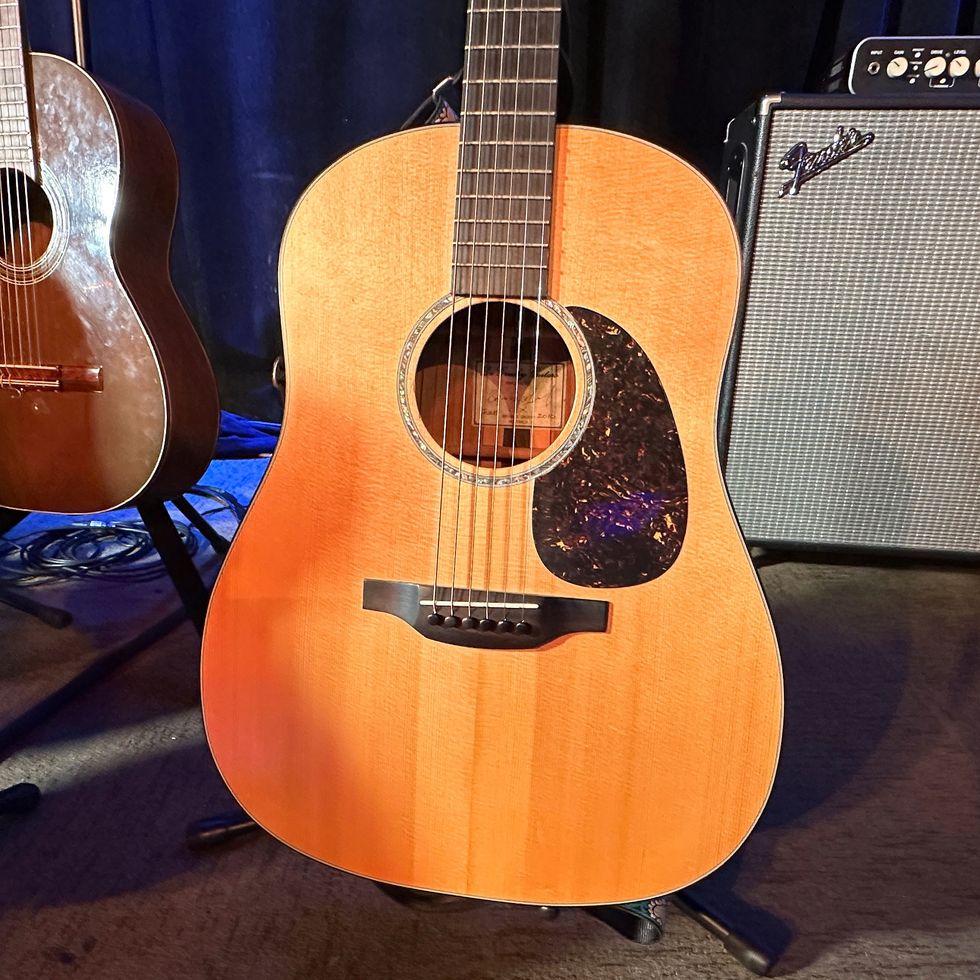
Hughes’ second-favorite acoustic is this slope shoulder DeGruchy.
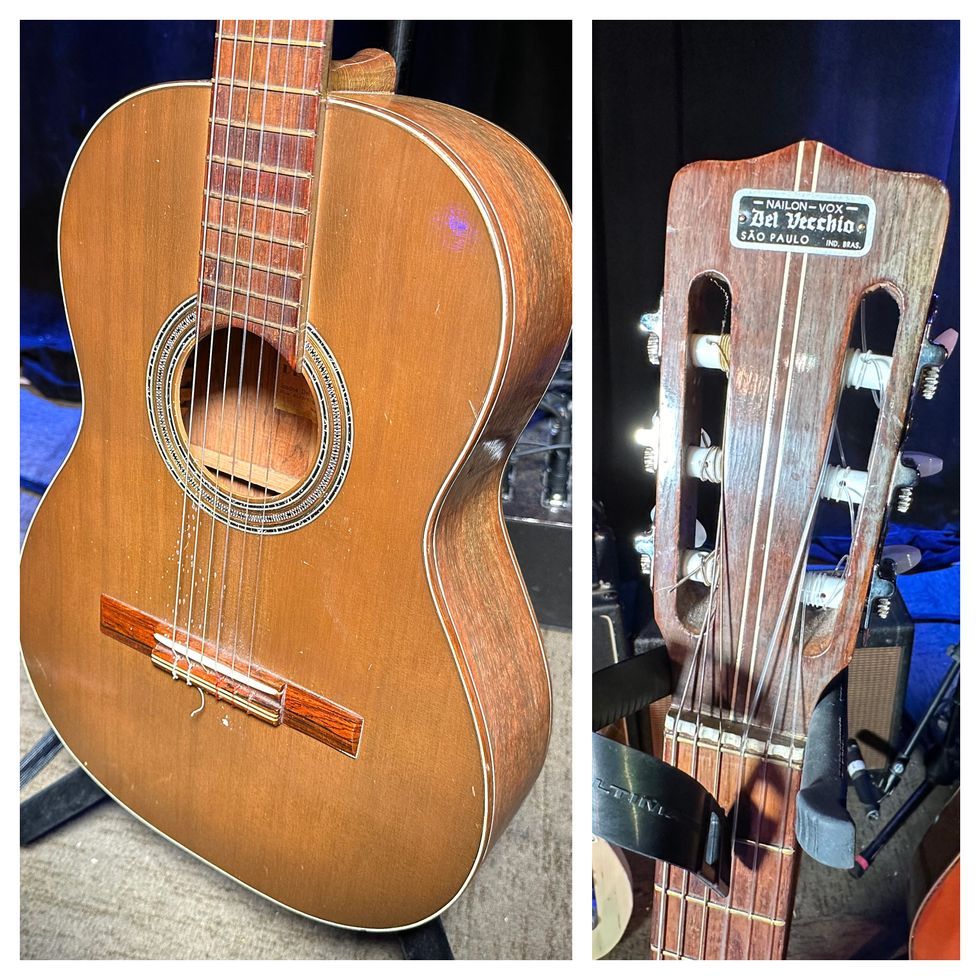
For a nylon string, Hughes goes with his old gut string Del Vecchio.
Party For Two

Hughes uses two amps combined, in a non-stereo setup. Amp number one is his 1952 Gibson GA-20, which has been rehoused in a Tweed Deluxe cab with a Celestion G12-65.
Number two is his tried-and-true 1962 Vox AC30.
The Boardroom
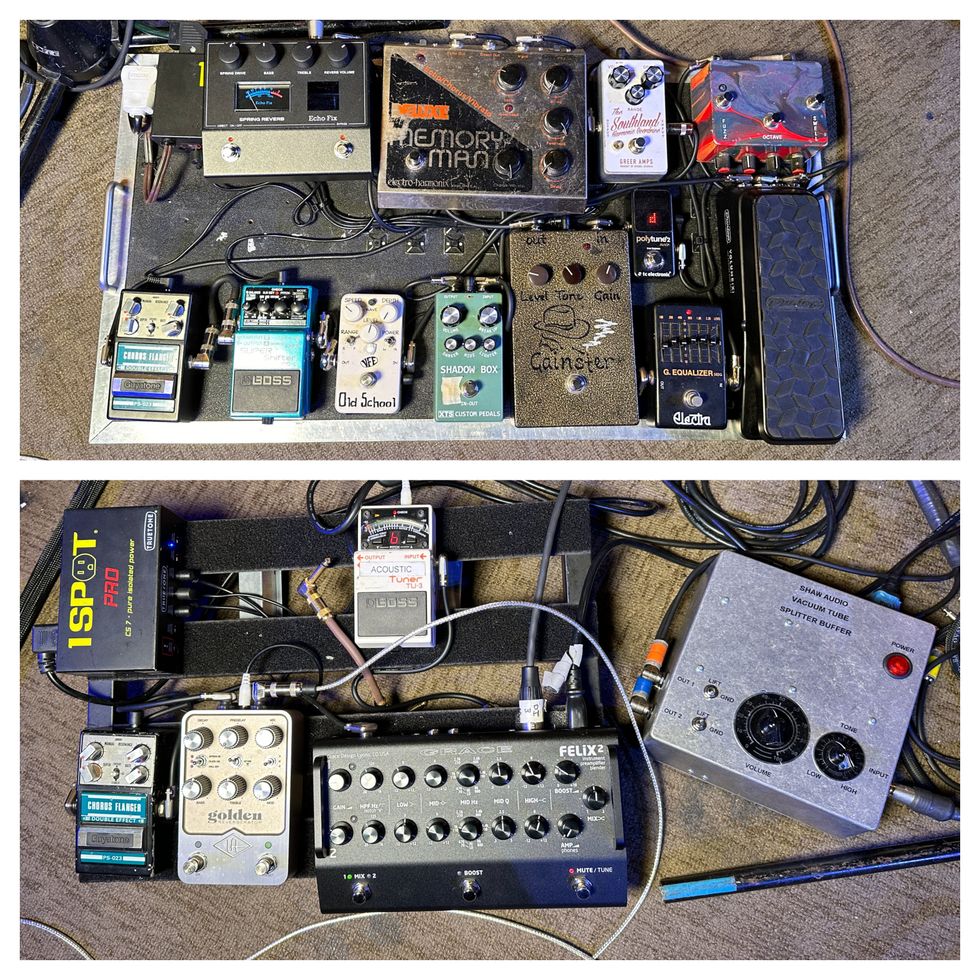
Hughes runs a larger board for his electric and a smaller one for his acoustic guitars. The electric board includes a Prescription Electronics Experience, Clark Gainster, a prototype XTS Shadow Box, Greer Southland, Dunlop volume pedal (with tuner out), VFE Old School tremolo, Boss PS-5 Super Shifter, Guyatone PS-023, EHX Deluxe Memory Man, Echo Fix EF-P2 Spring Reverb, and finally a Shaw Audio Vacuum Tube Splitter Buffer, which splits two mono lines to the amps.
Hughes runs his acoustics into a Grace Design FELiX2 preamp. From there, it hits a Guyatone PS-023, a Universal Audio Golden Reverberator, and a Boss TU-2.
Shop Jedd Hughes' Rig

Vox AC30
Dunlop DVP3 Volume (X) Volume and Expression Pedal
Boss PS-6 Harmonist Pedal
Electro-Harmonix Deluxe Memory Man Analog Delay / Chorus / Vibrato Pedal
Grace Design FELiX 2 Instrument Preamp/Blender - Silver
Universal Audio Golden Reverberator
Boss TU-2
D'Addario NYXL1046 NYXL Nickel Wound Electric Guitar Strings - .010-.046 Regular





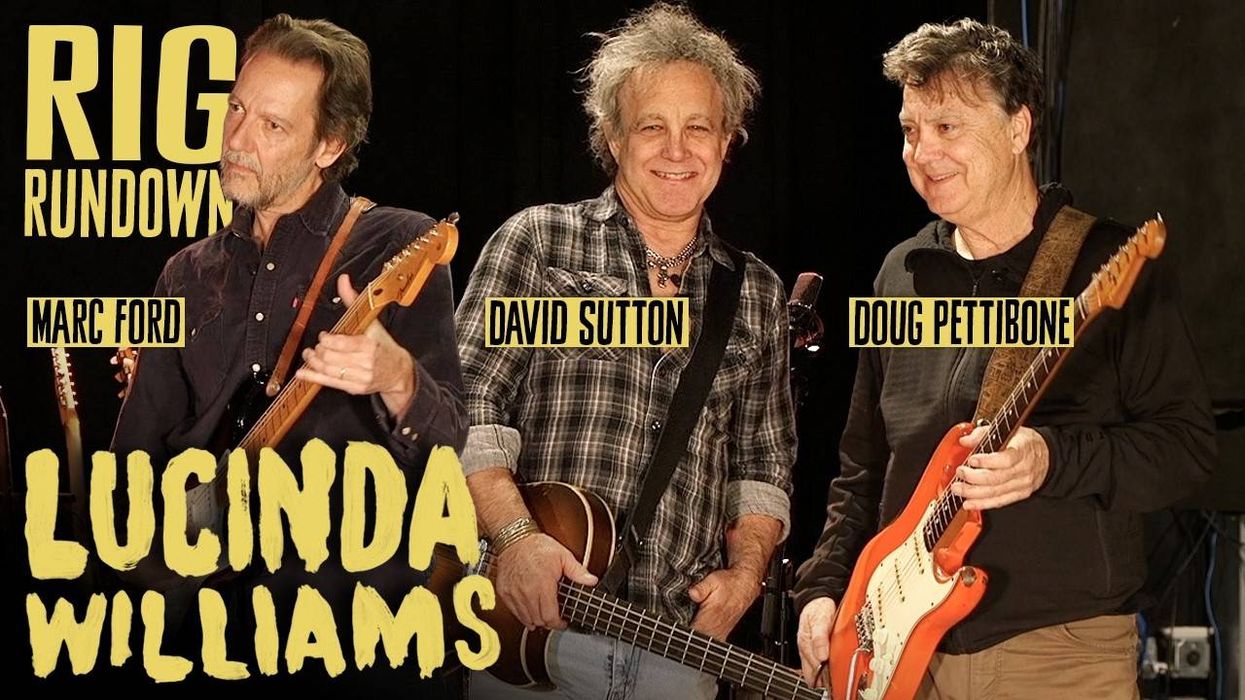

![Rig Rundown: Russian Circles’ Mike Sullivan [2025]](https://www.premierguitar.com/media-library/youtube.jpg?id=62303631&width=1245&height=700&quality=70&coordinates=0%2C0%2C0%2C0)

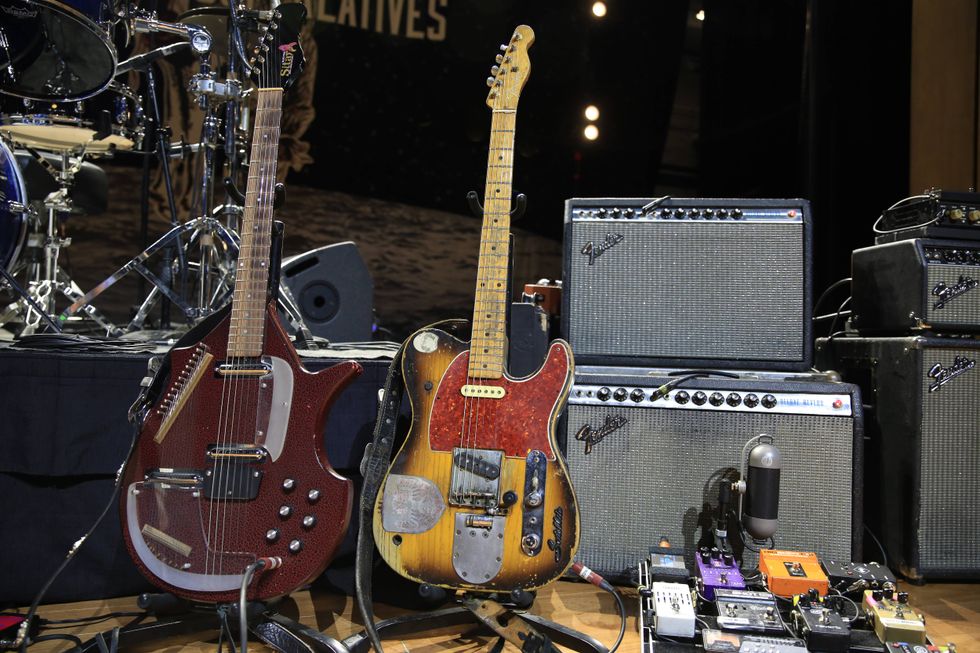
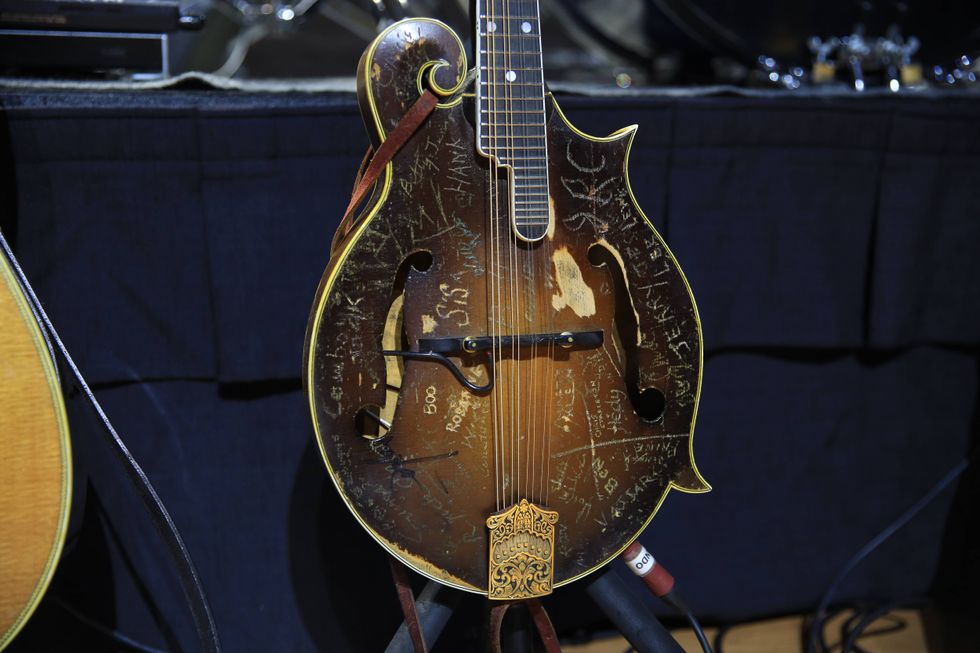
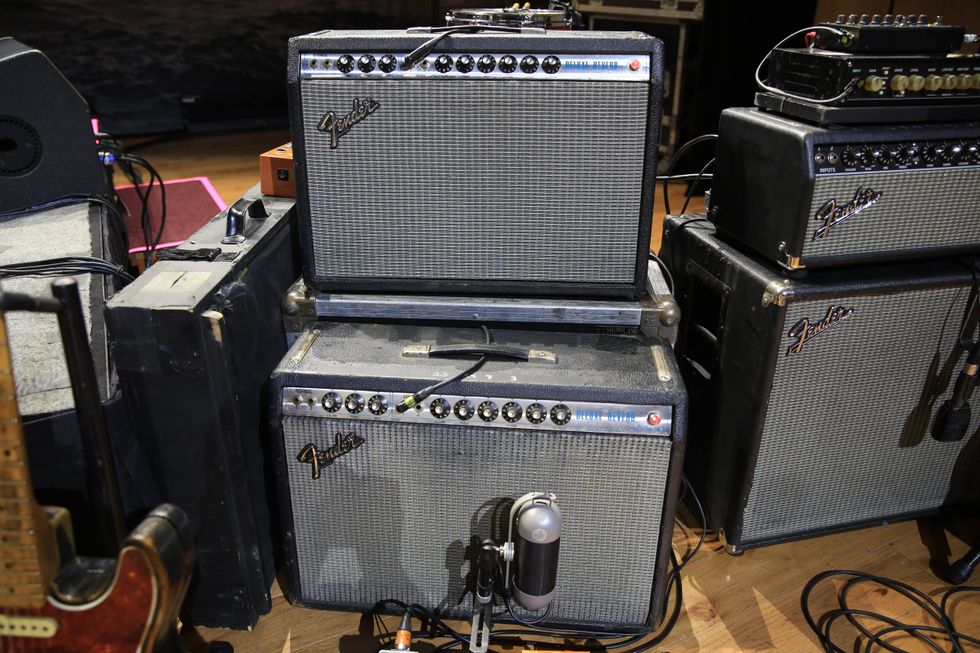
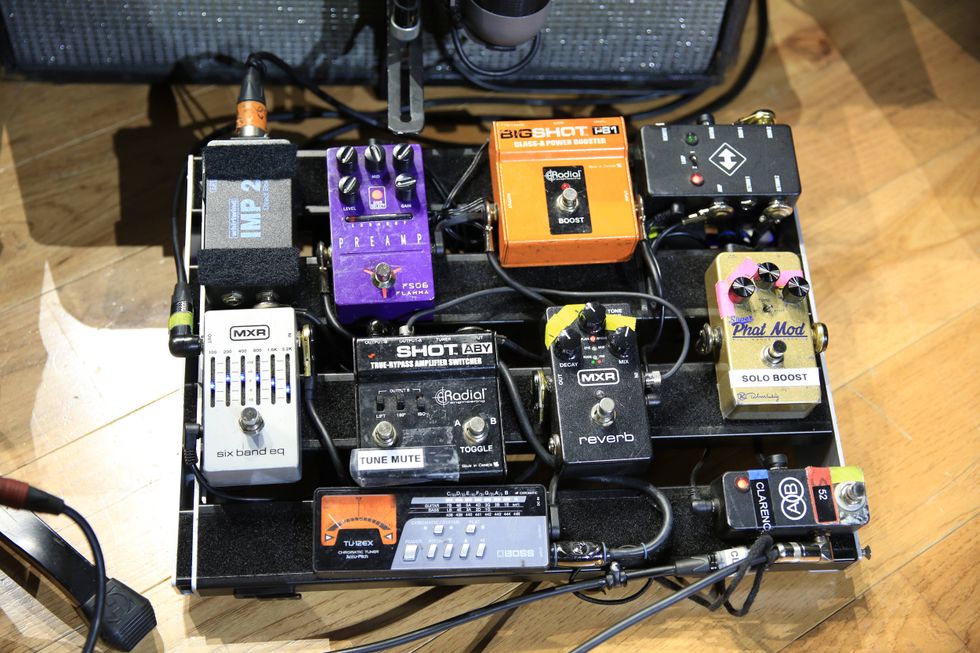
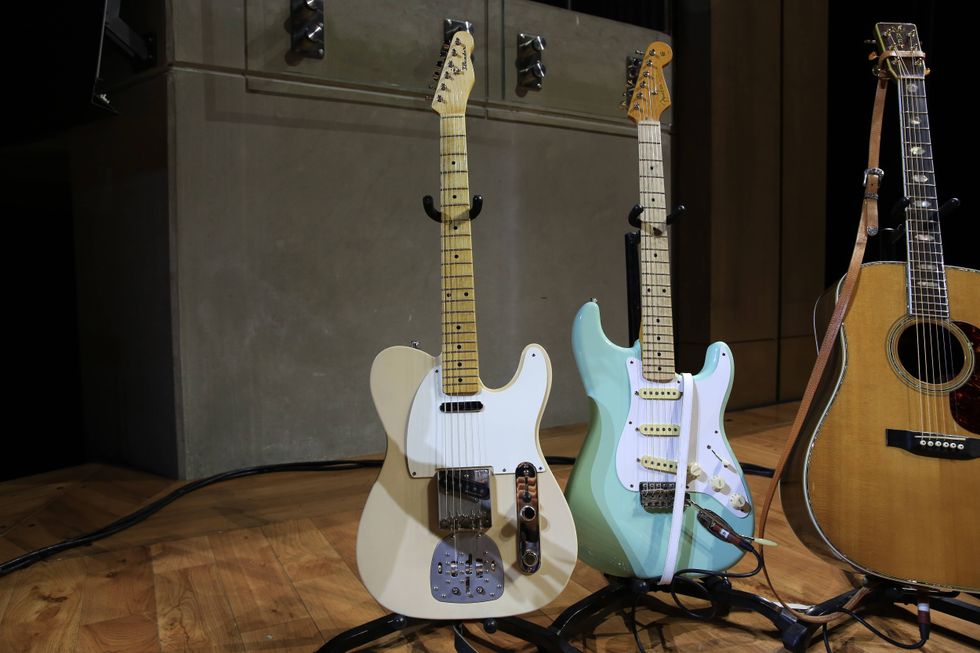
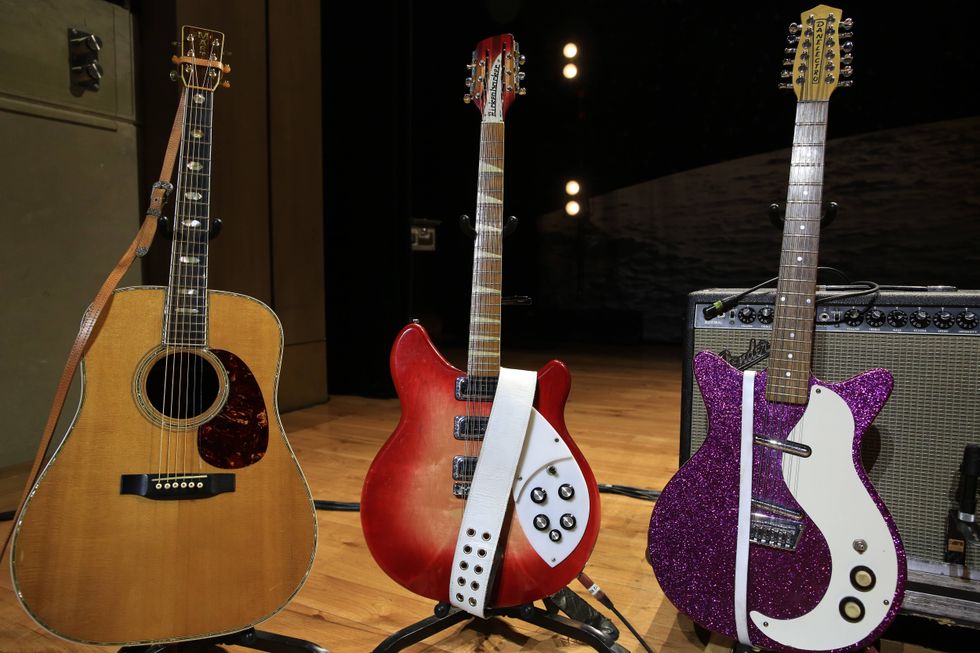
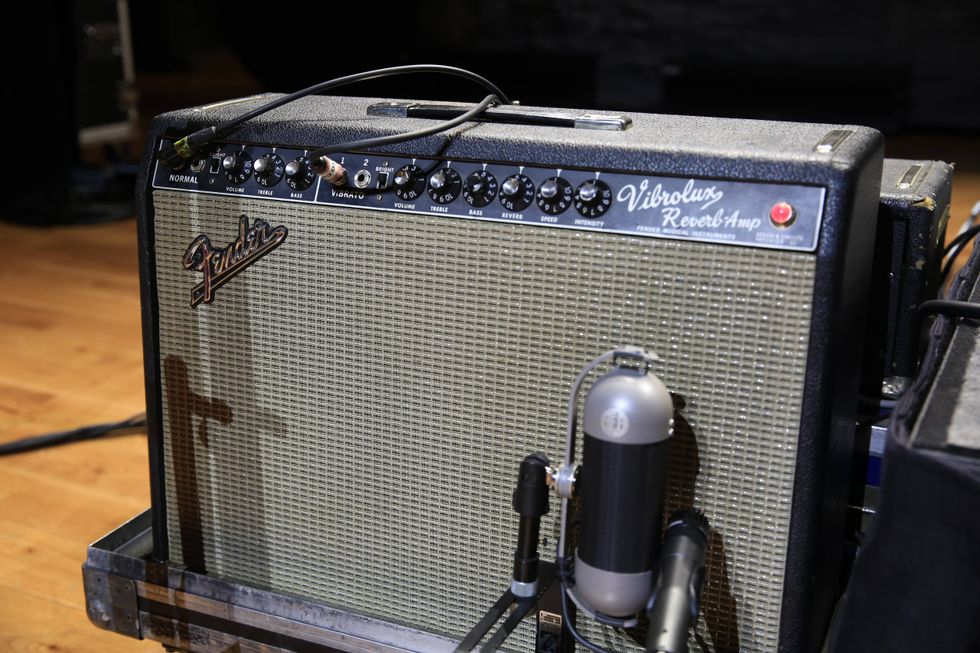
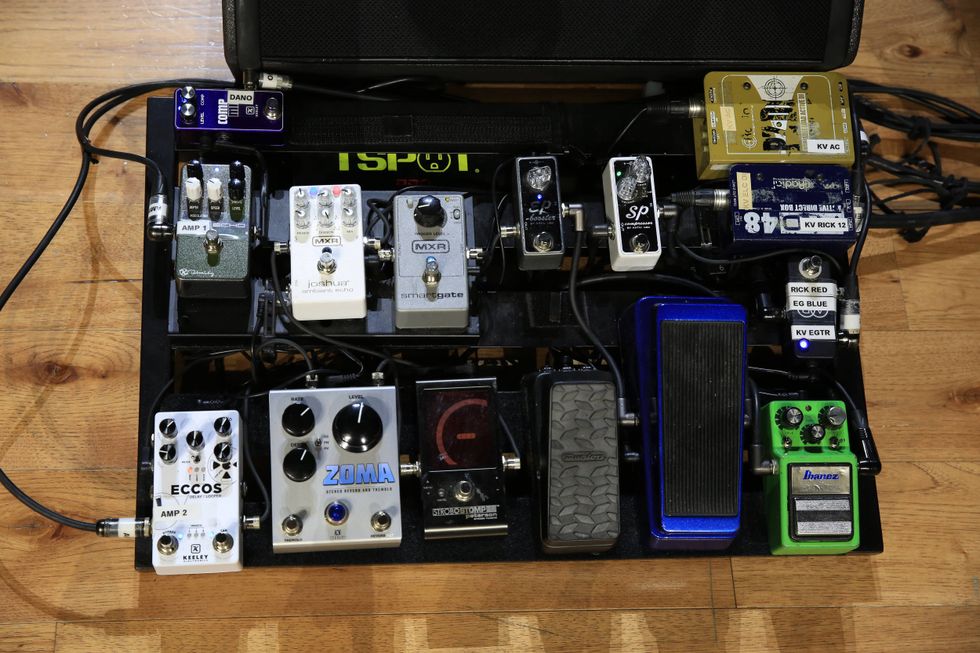

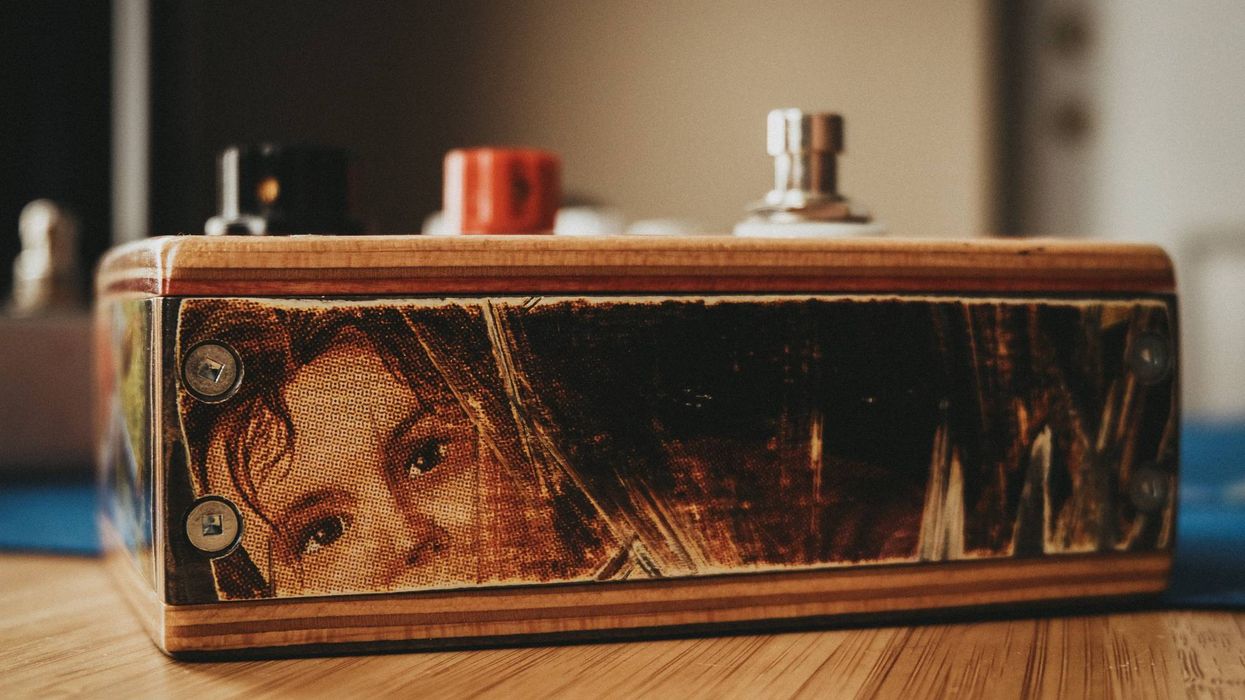
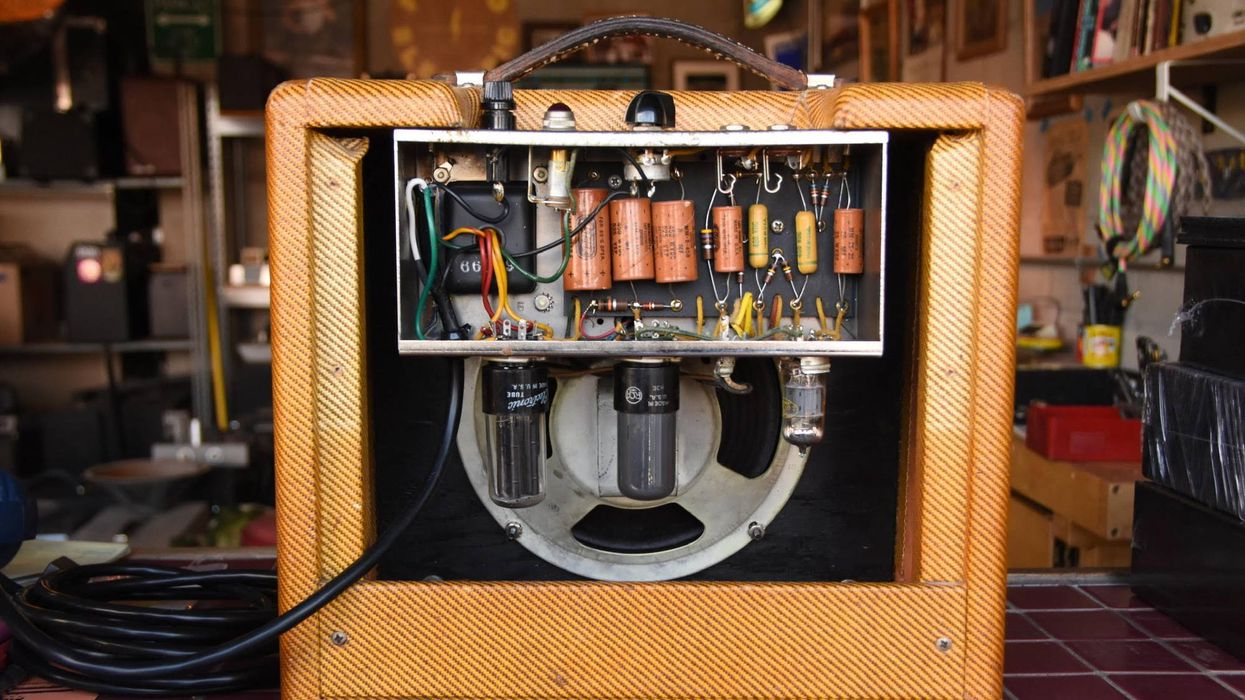

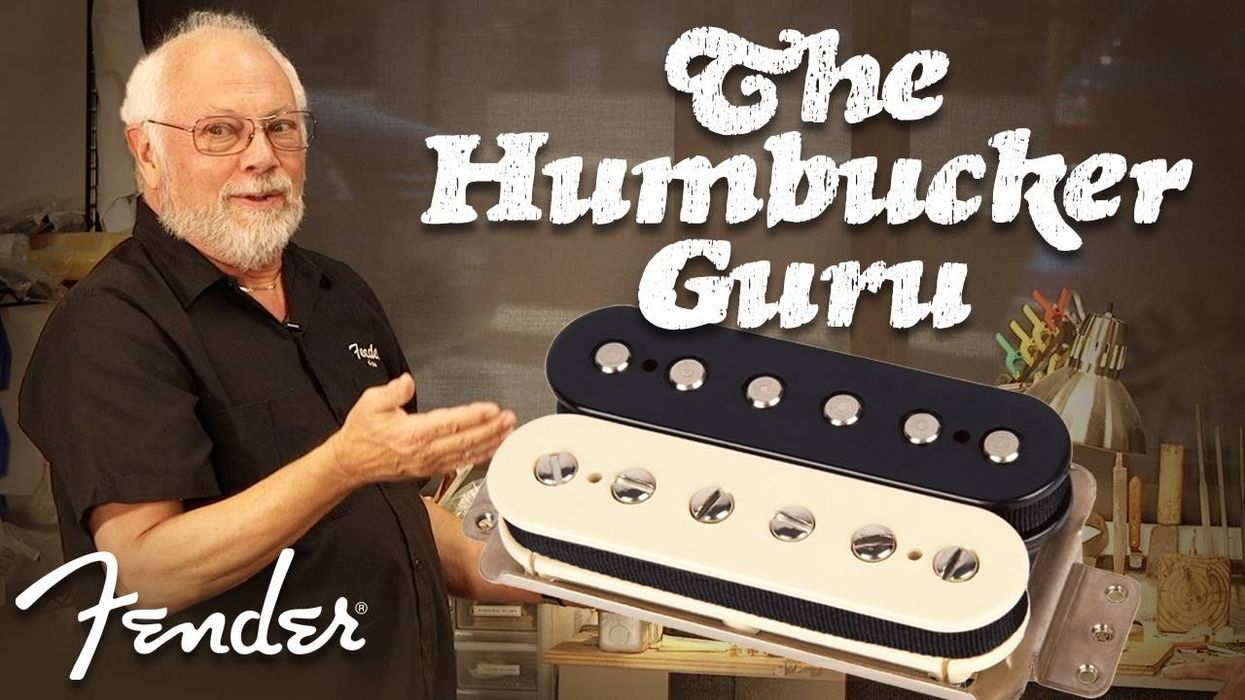

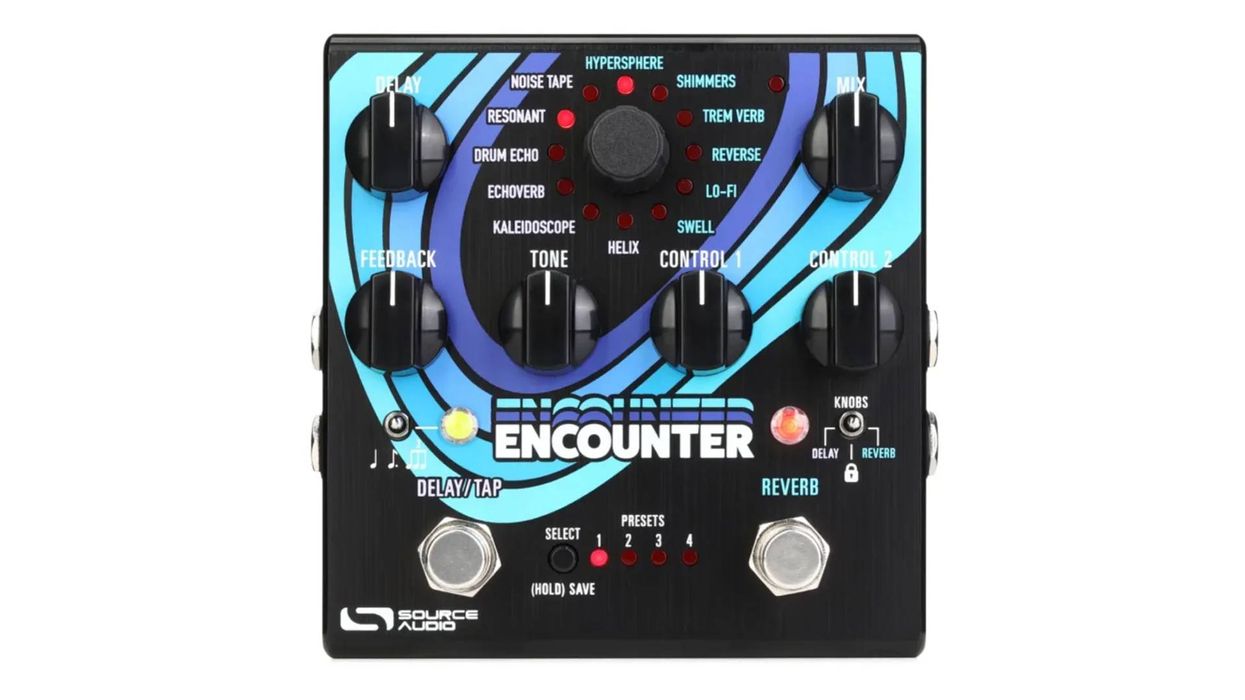

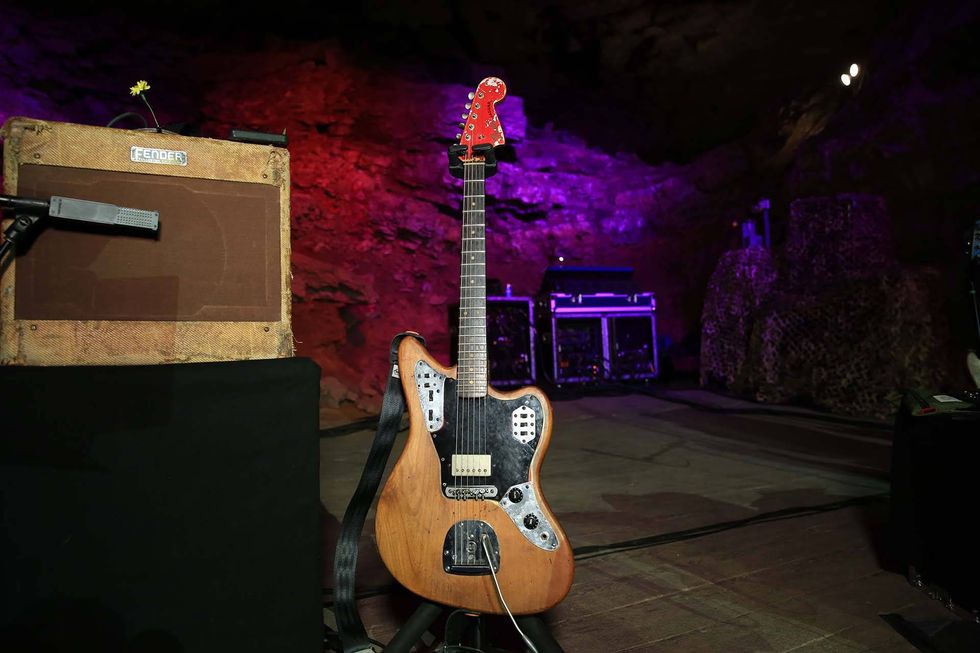
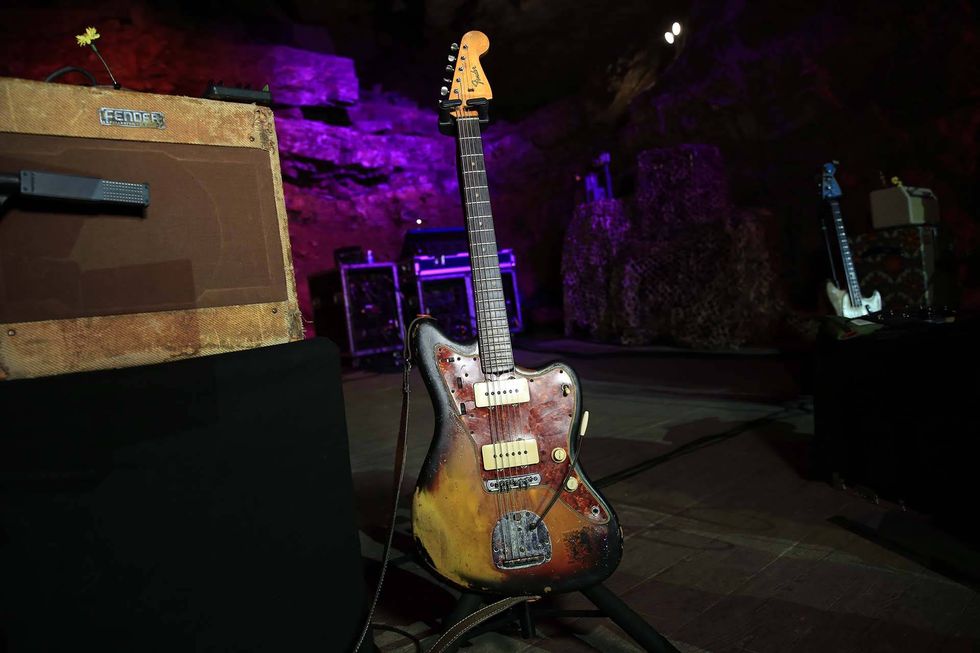
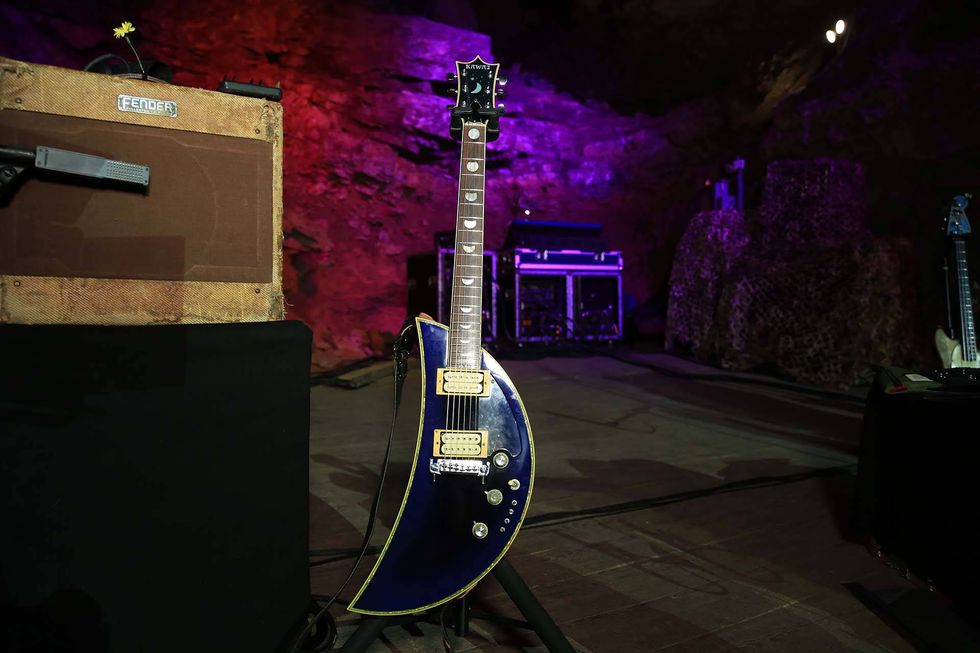
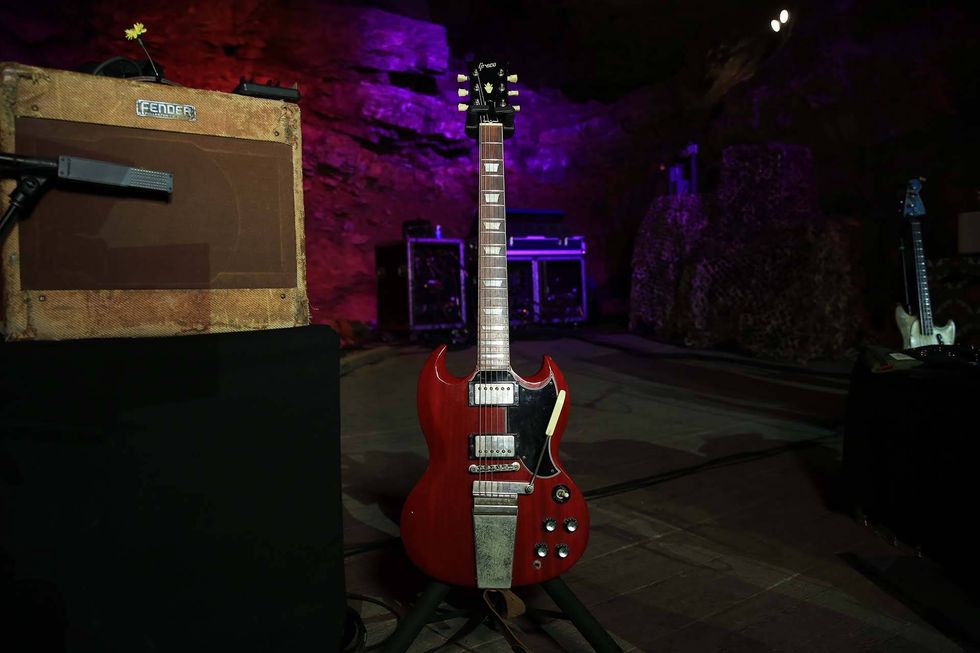
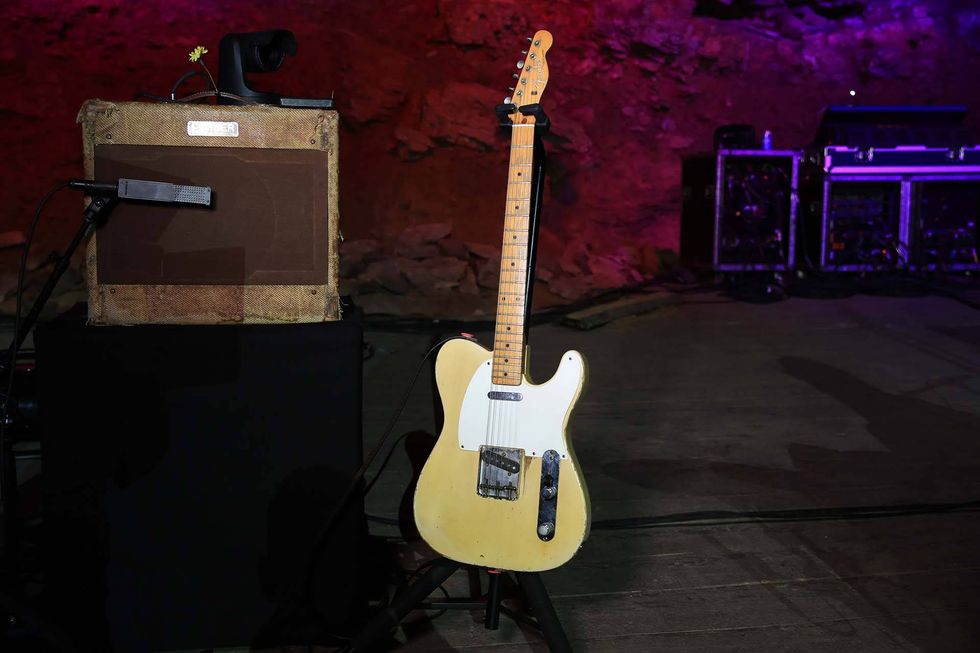
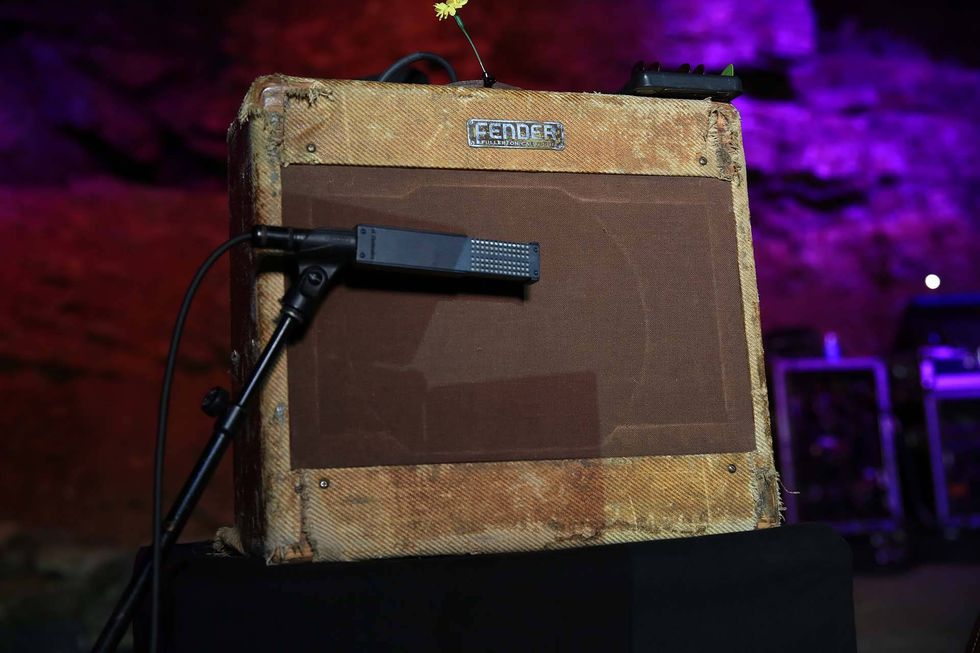
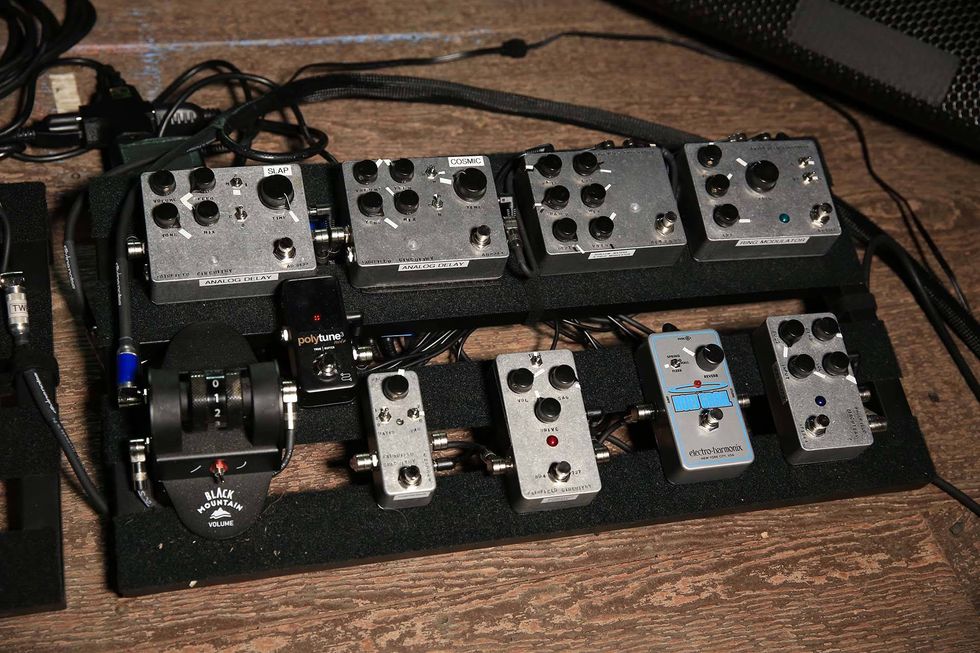
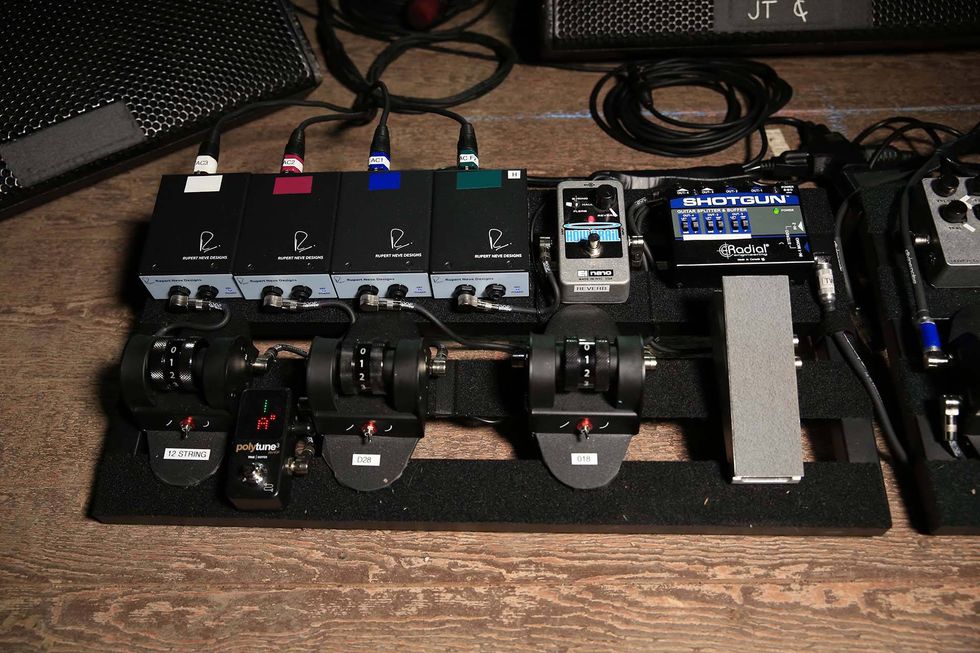


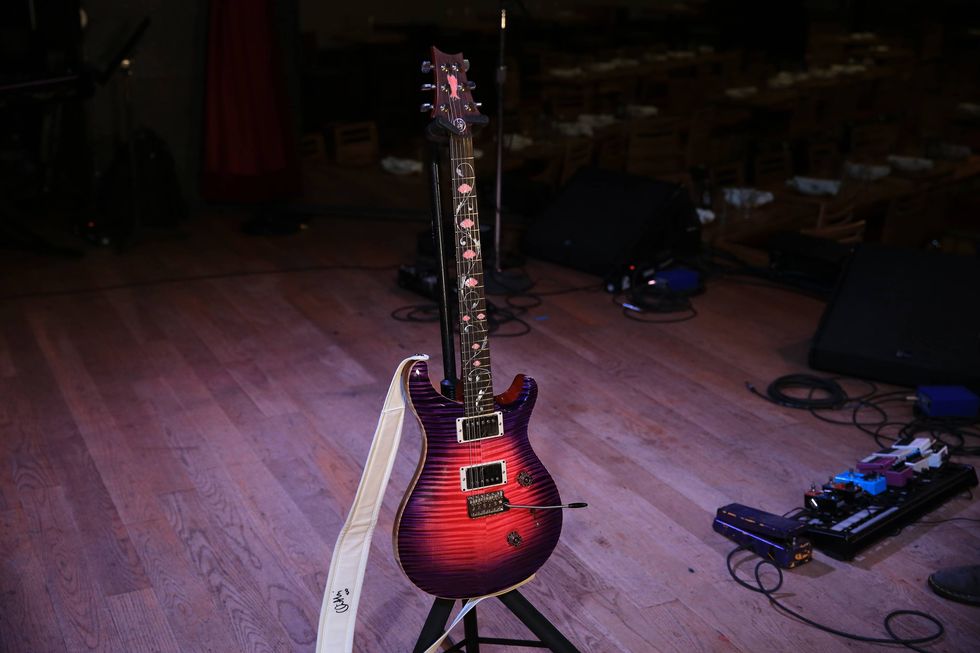
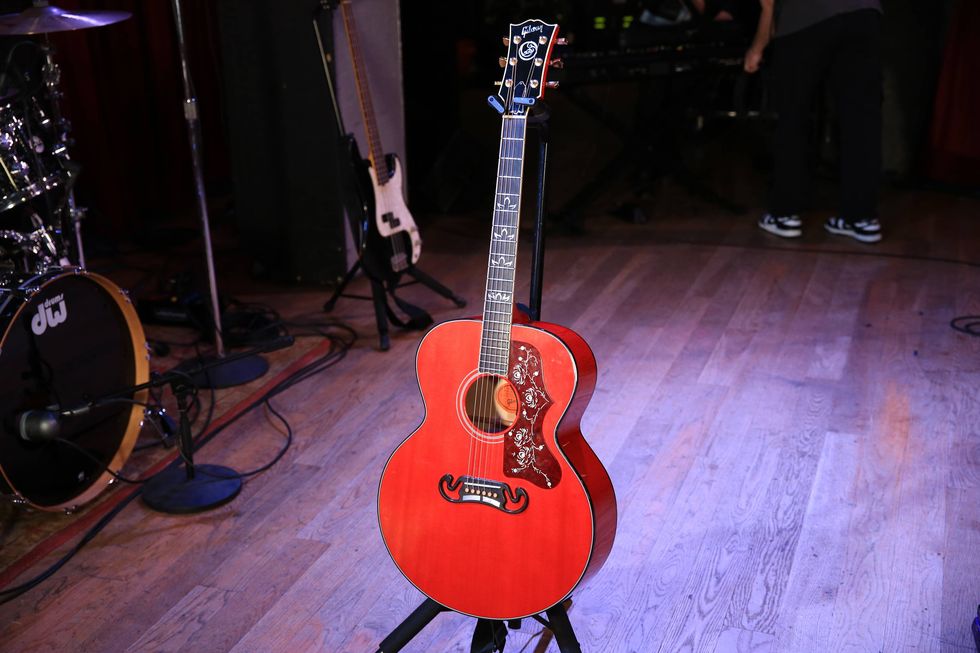
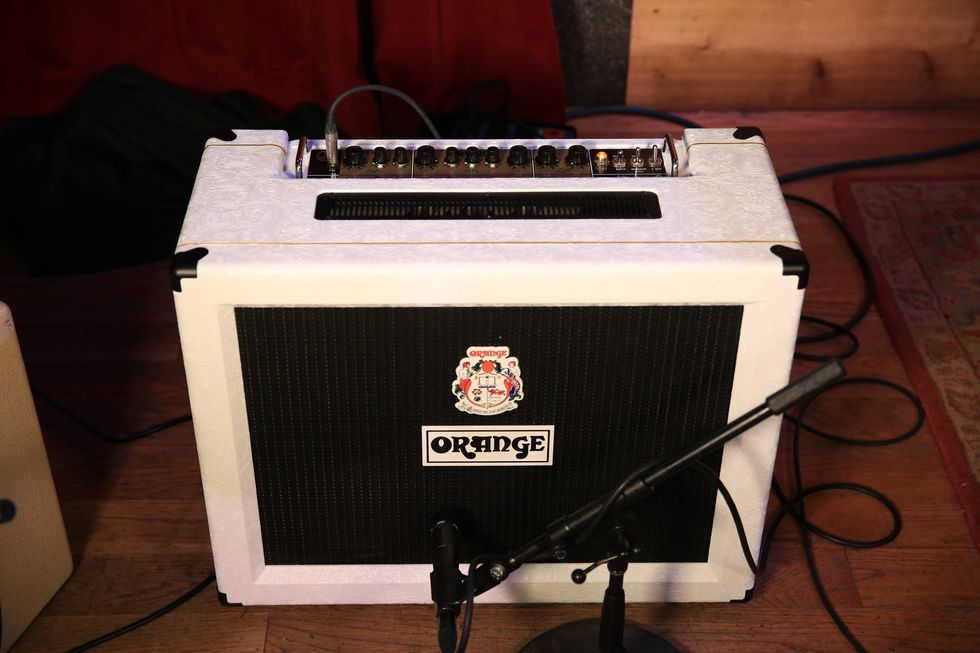
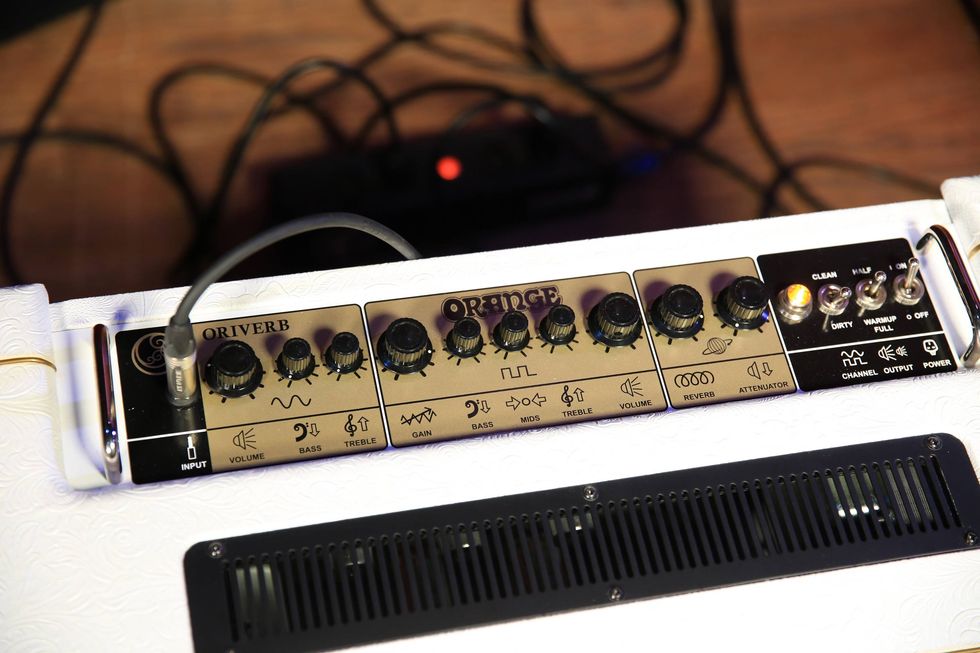
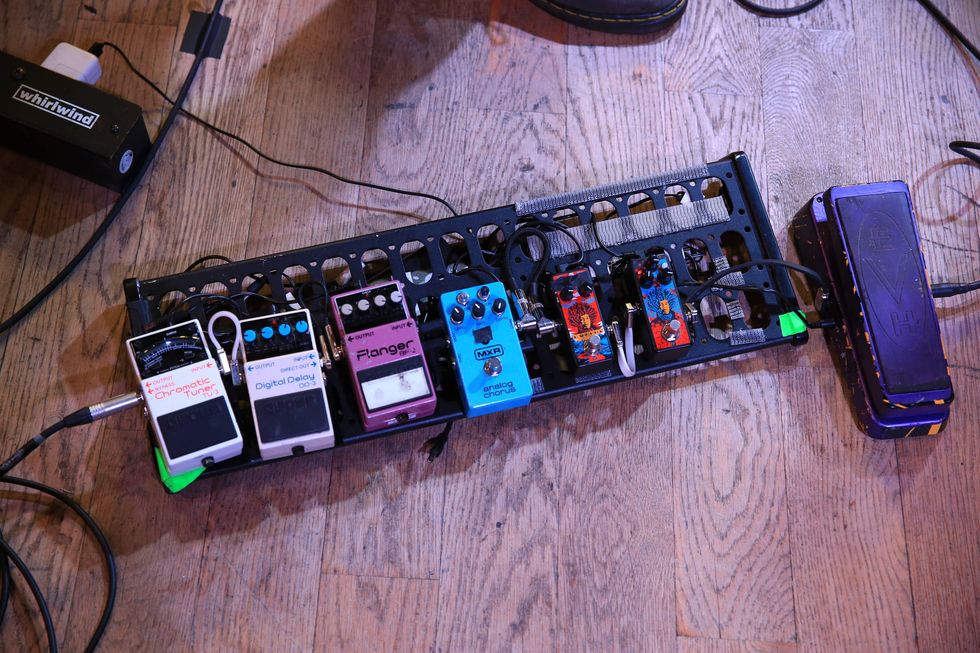

![Rig Rundown: AFI [2025]](https://www.premierguitar.com/media-library/youtube.jpg?id=62064741&width=1245&height=700&quality=70&coordinates=0%2C0%2C0%2C0)
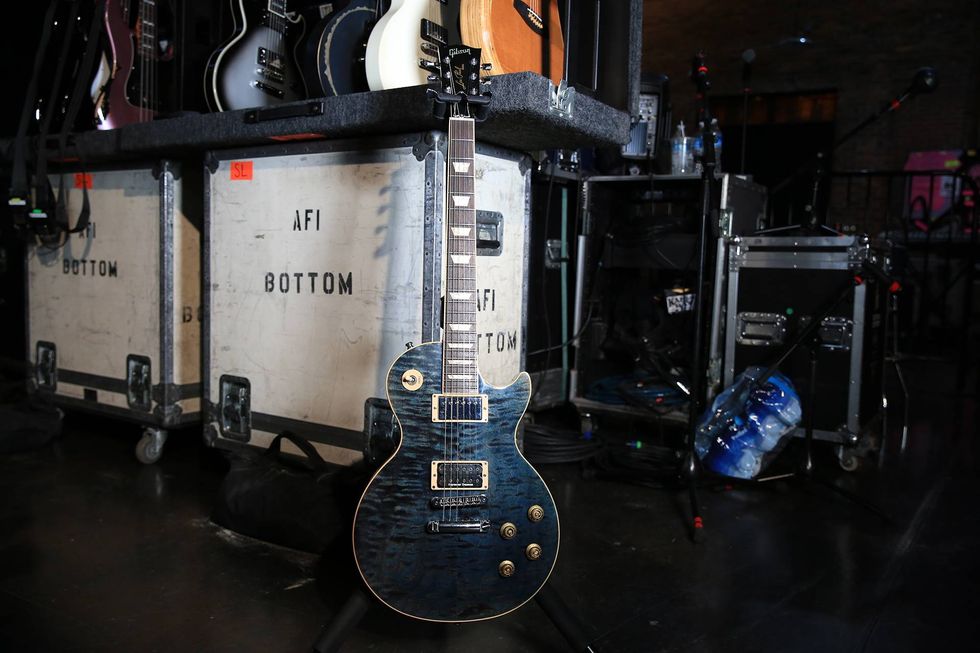
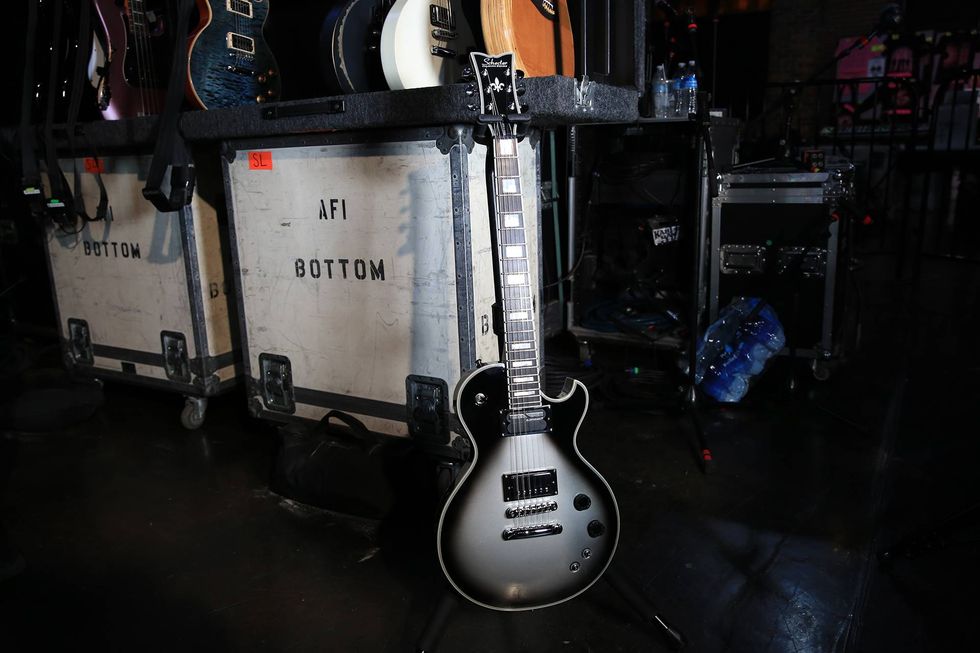
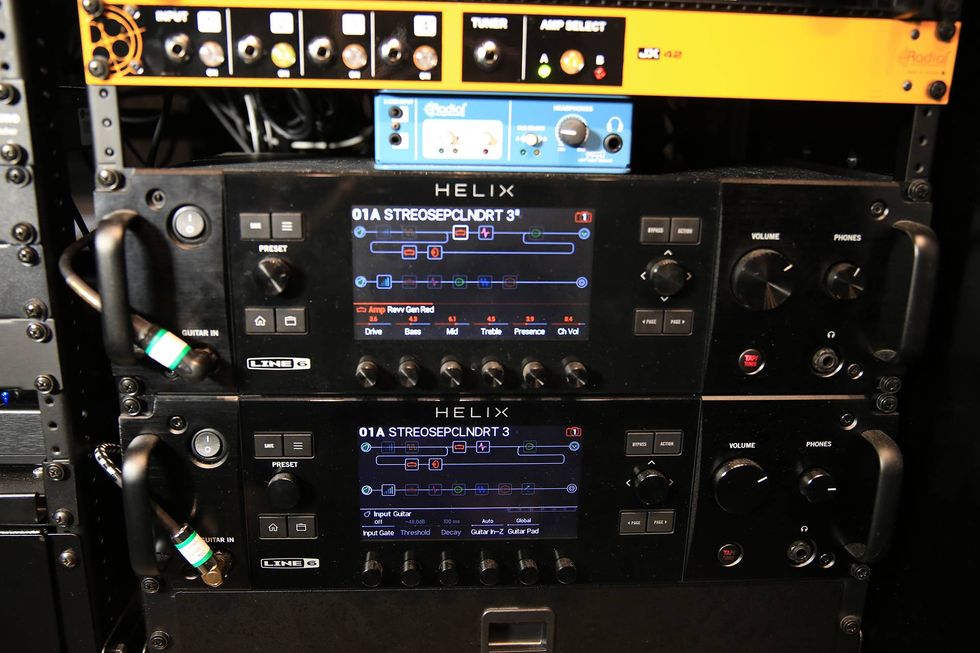
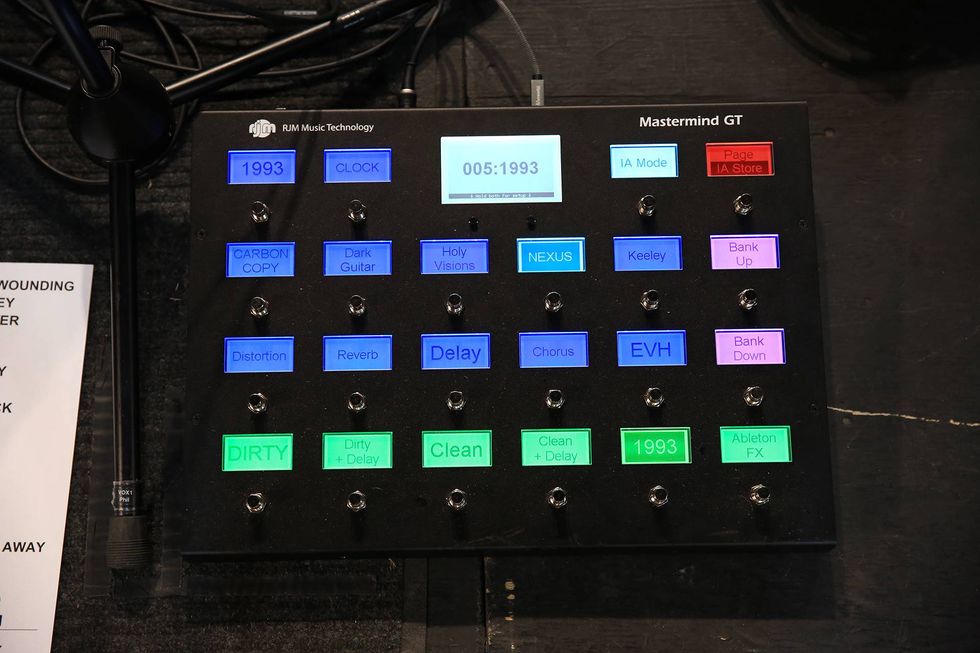
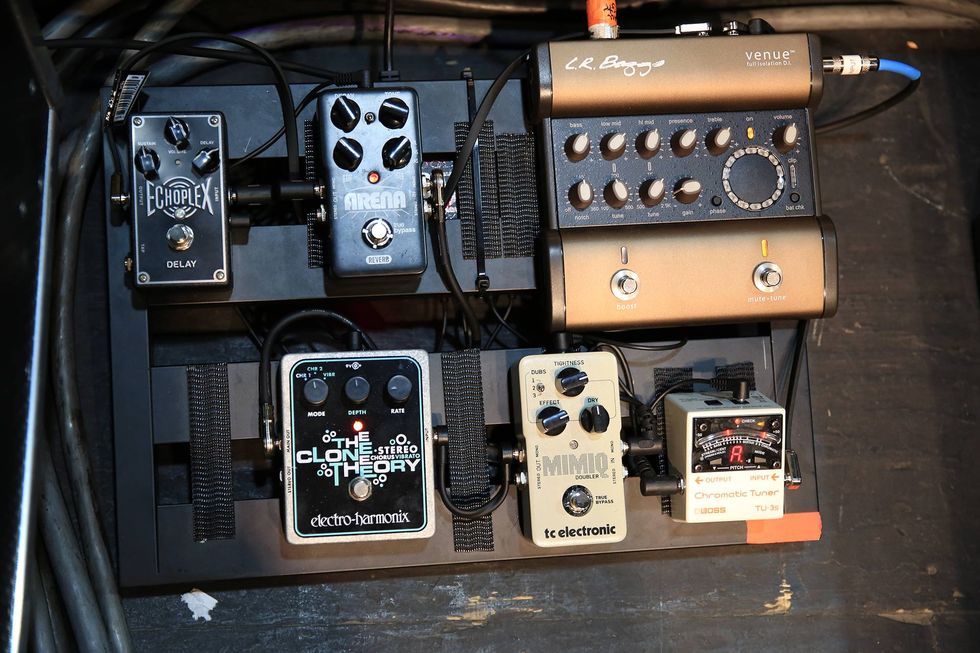
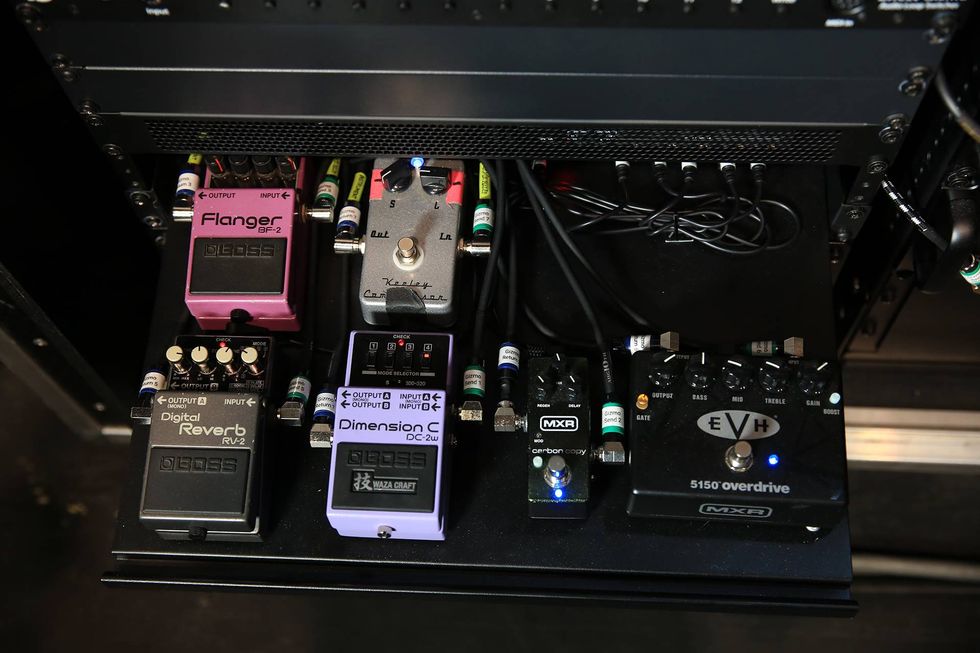
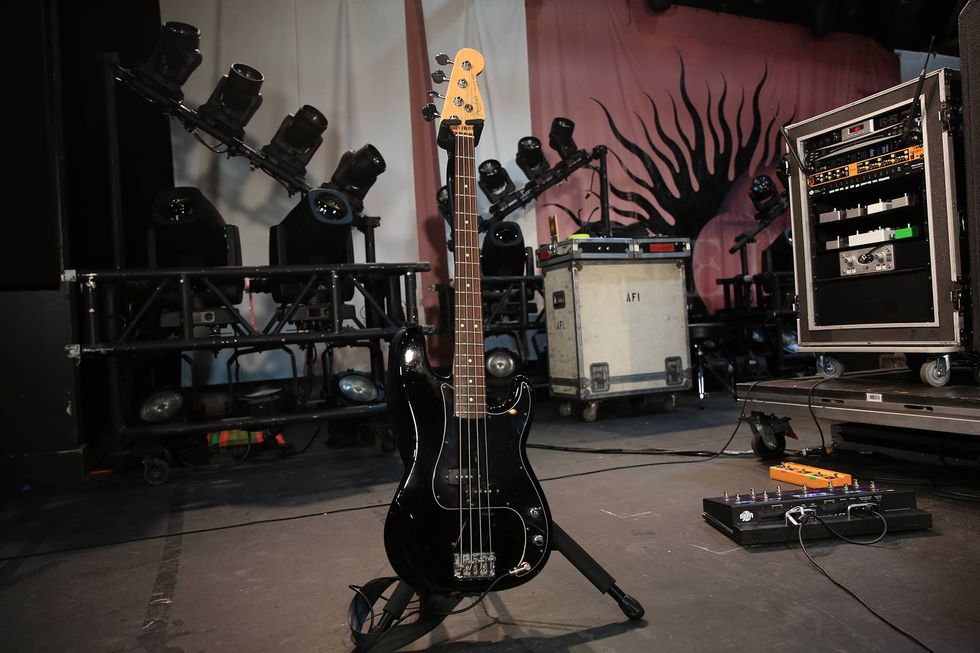
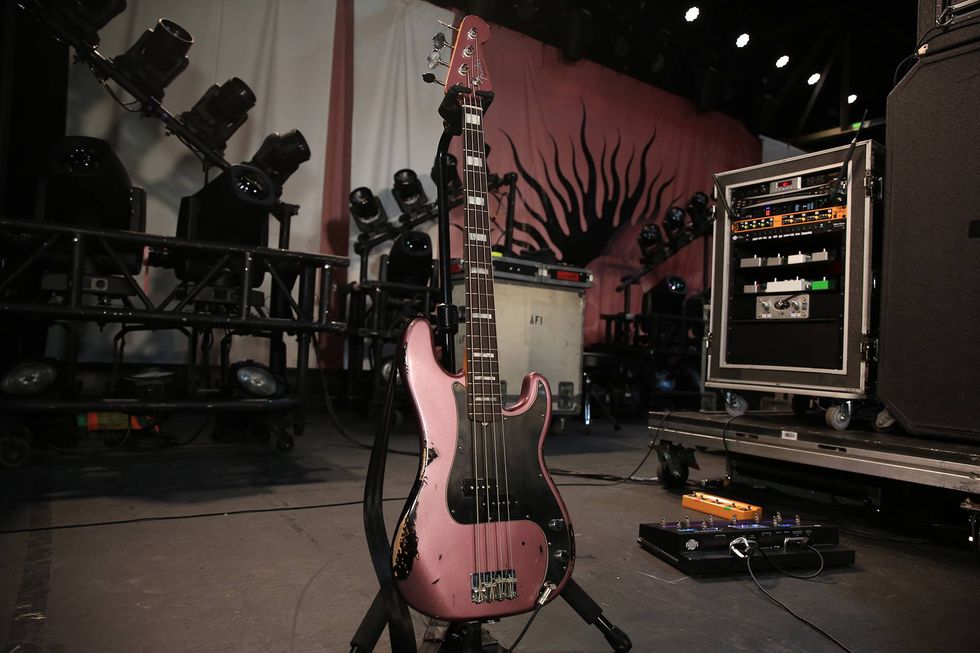
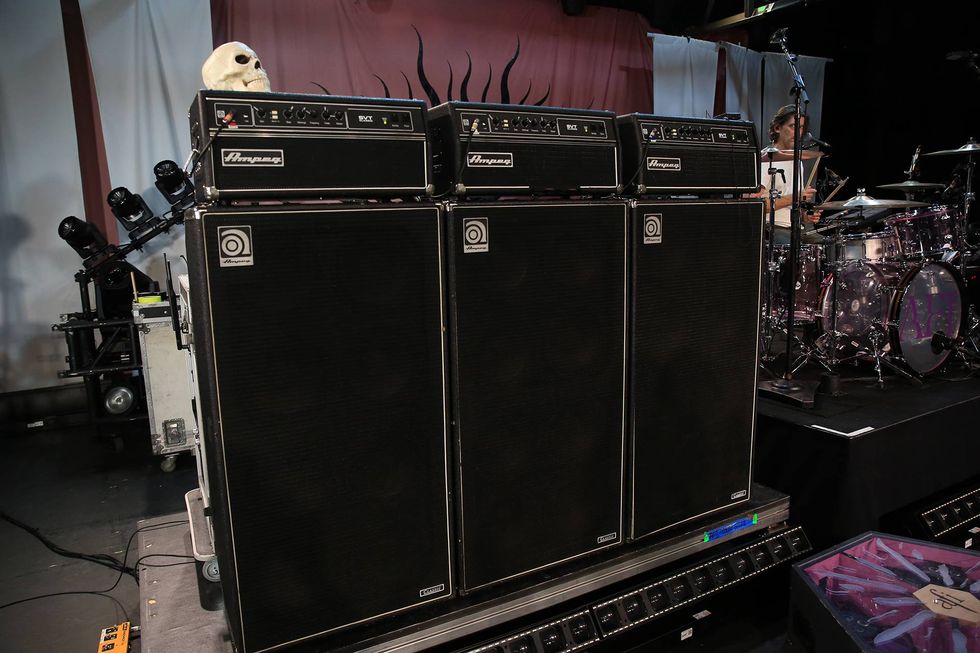
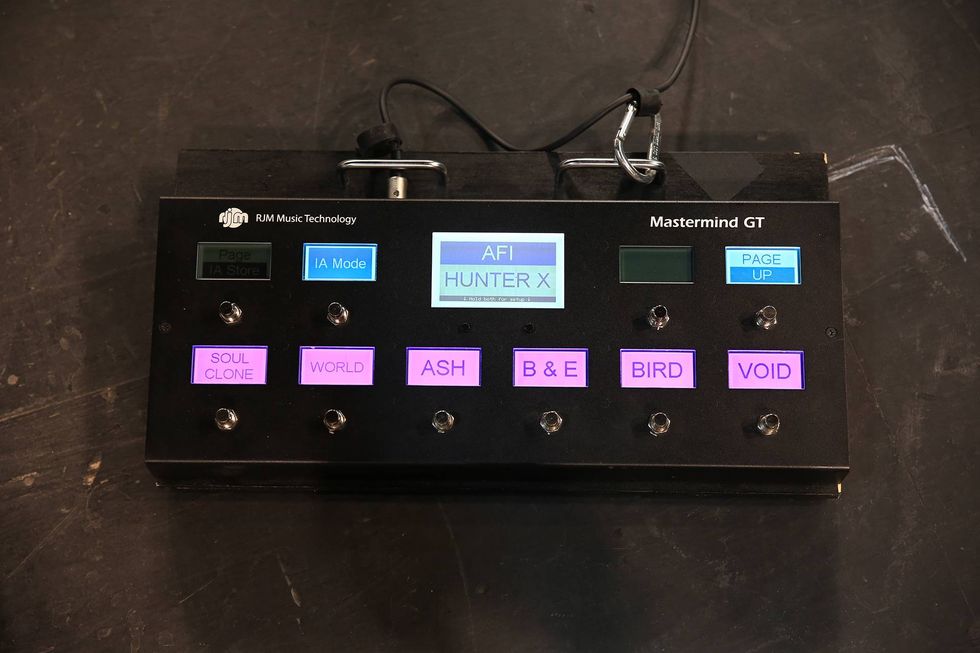
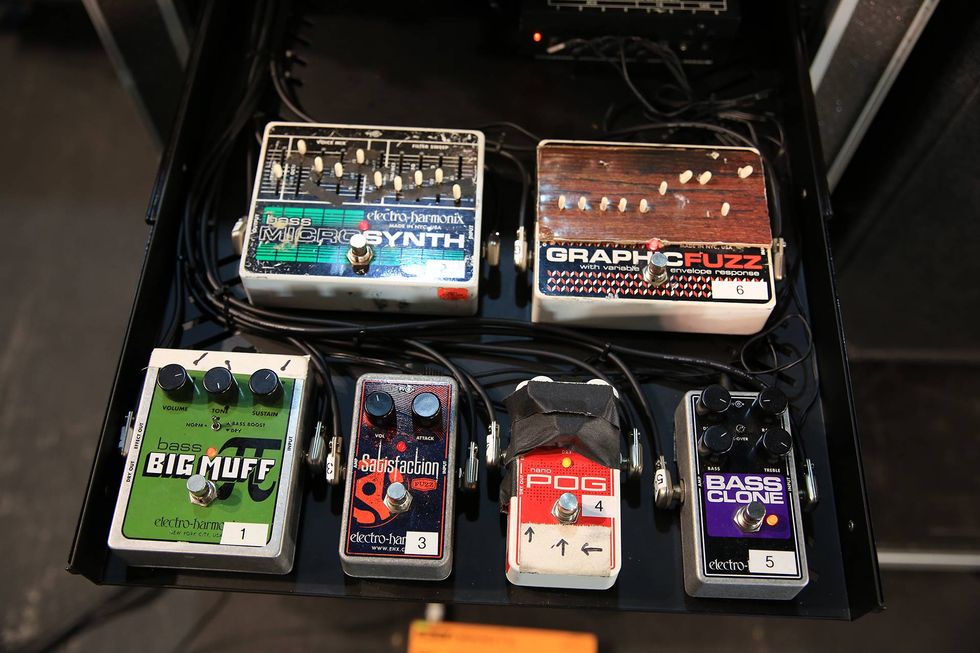
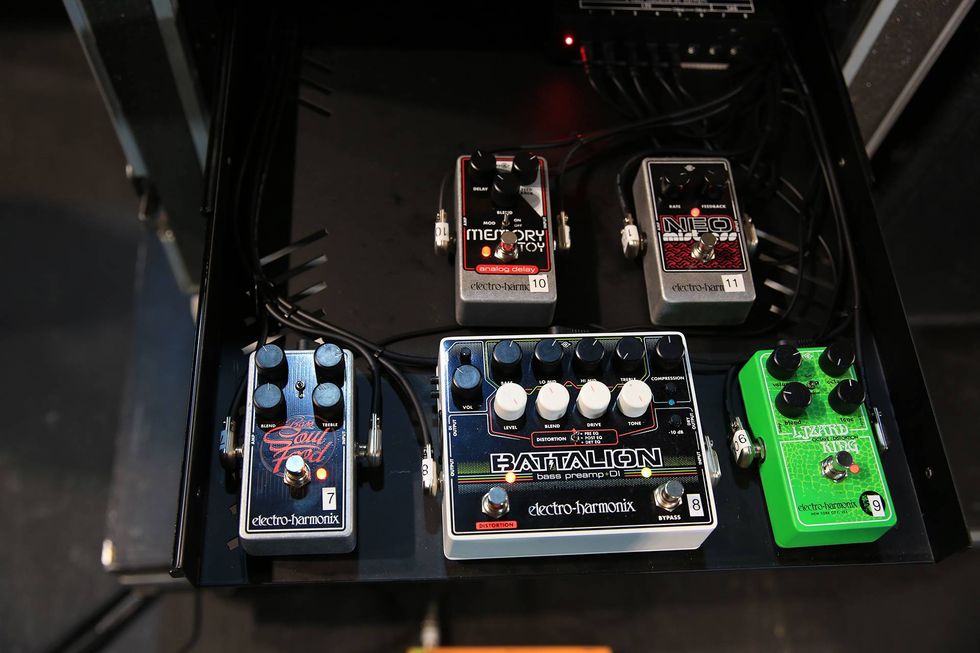


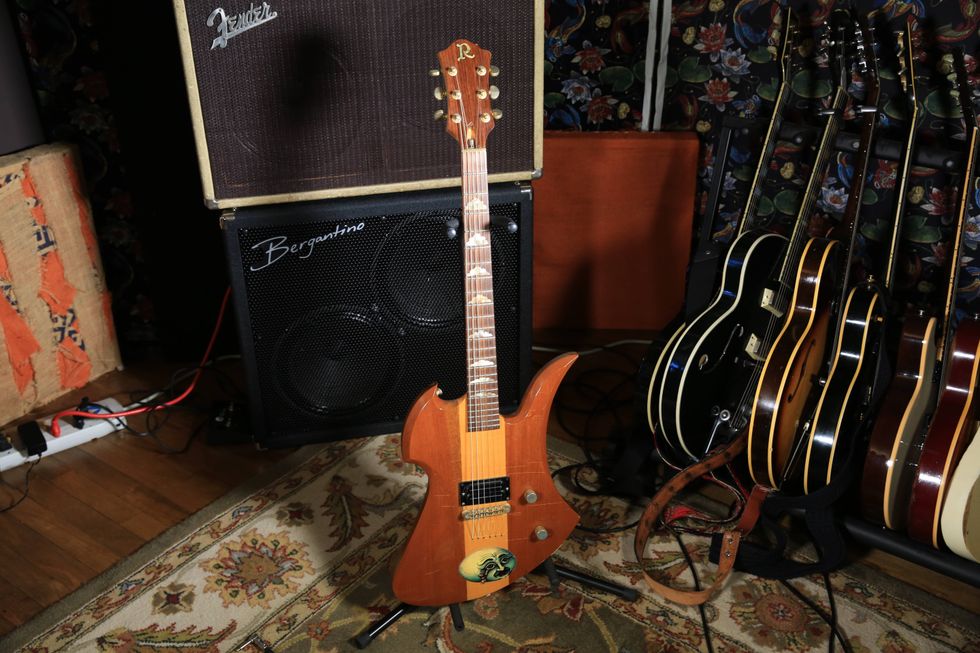
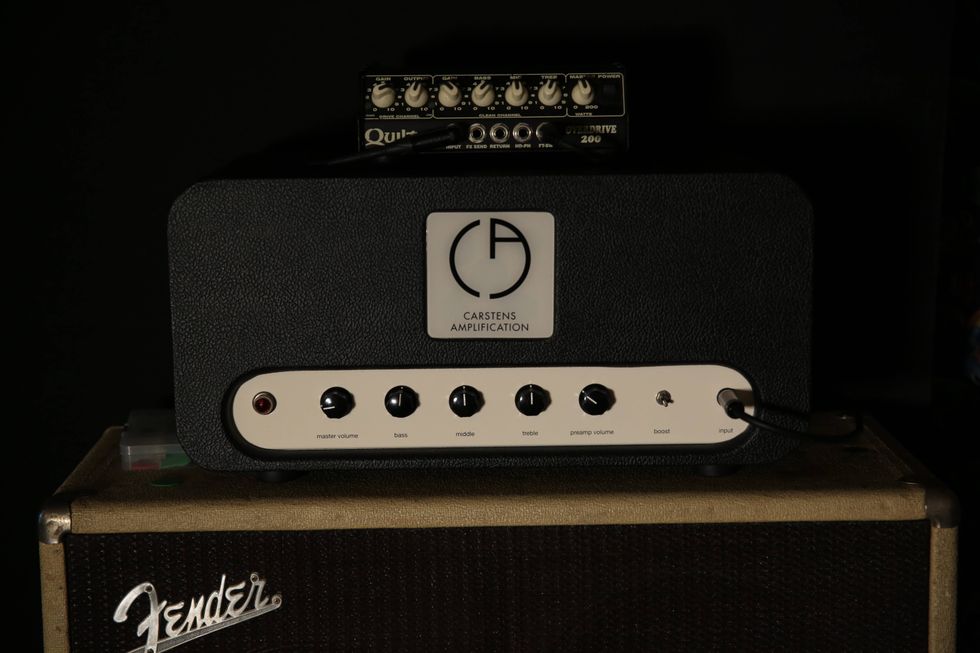
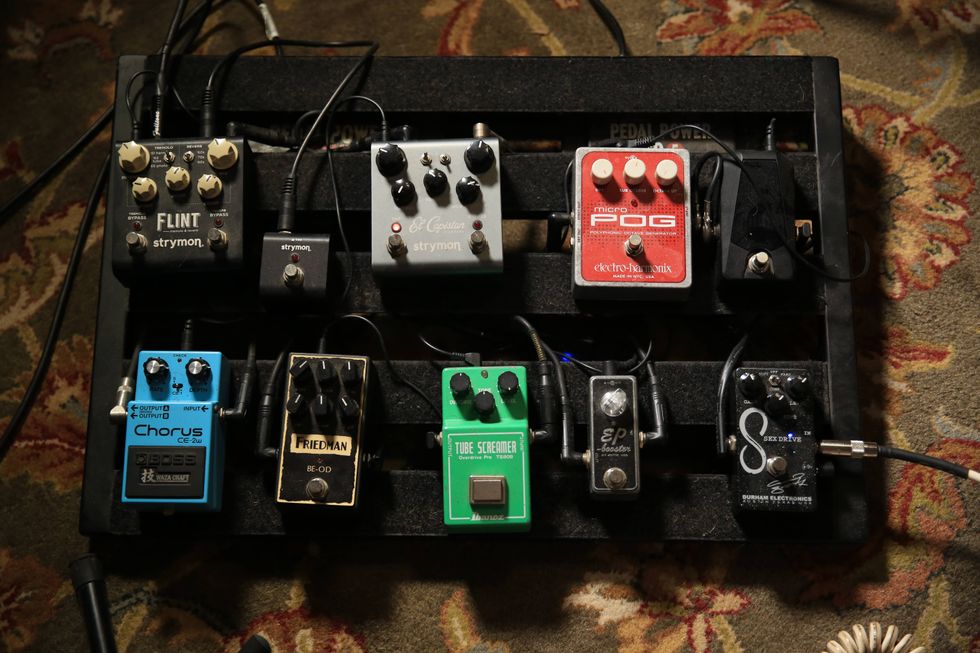
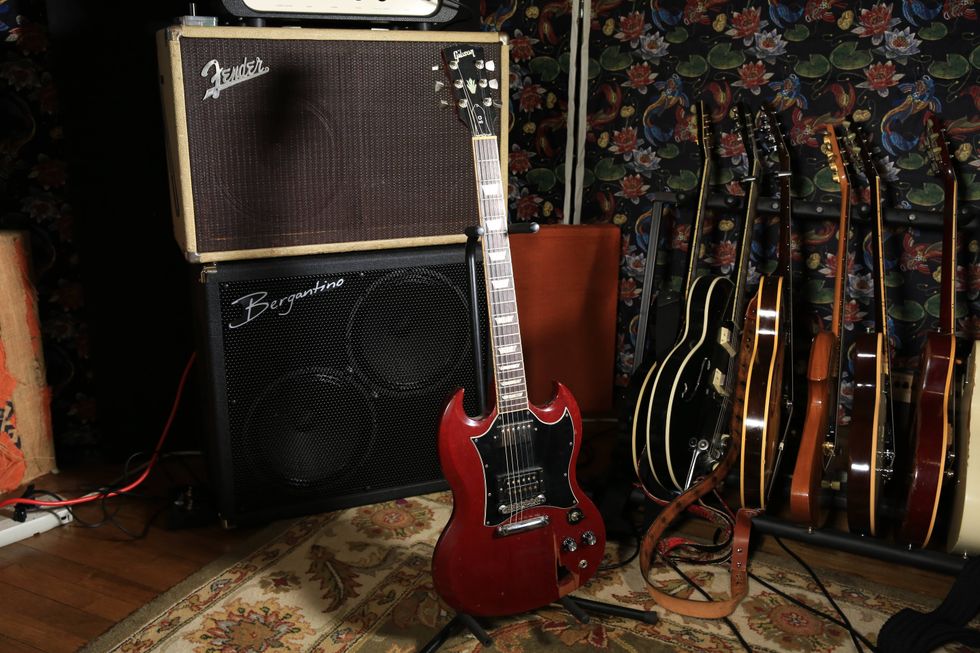
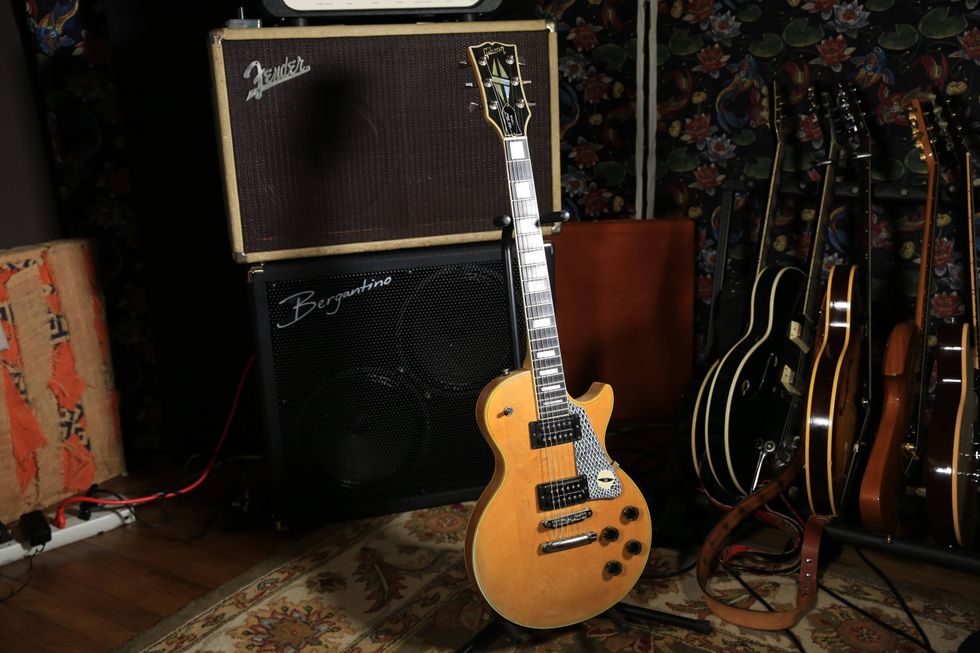
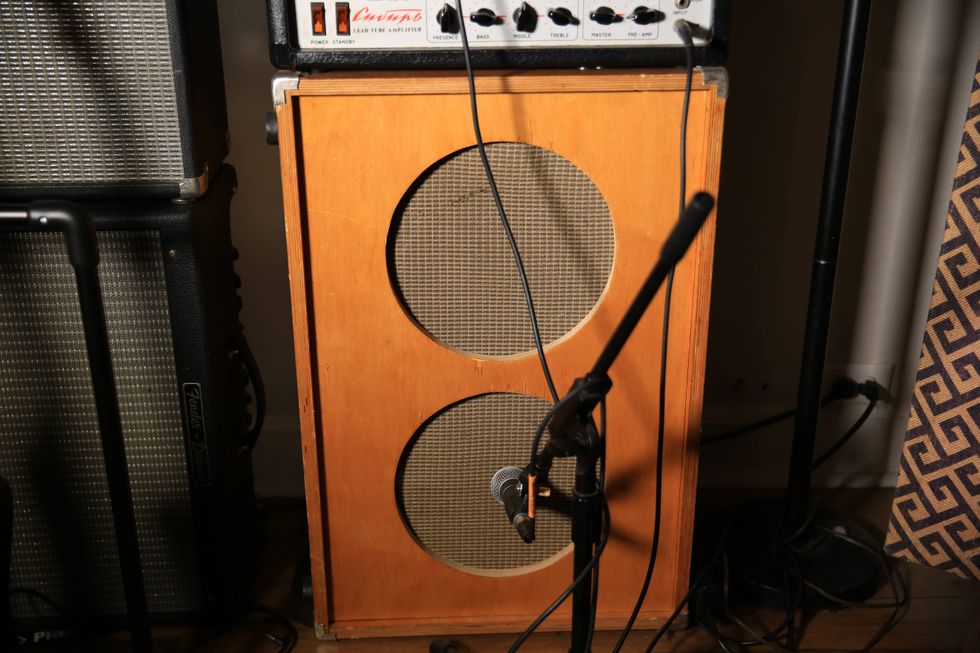
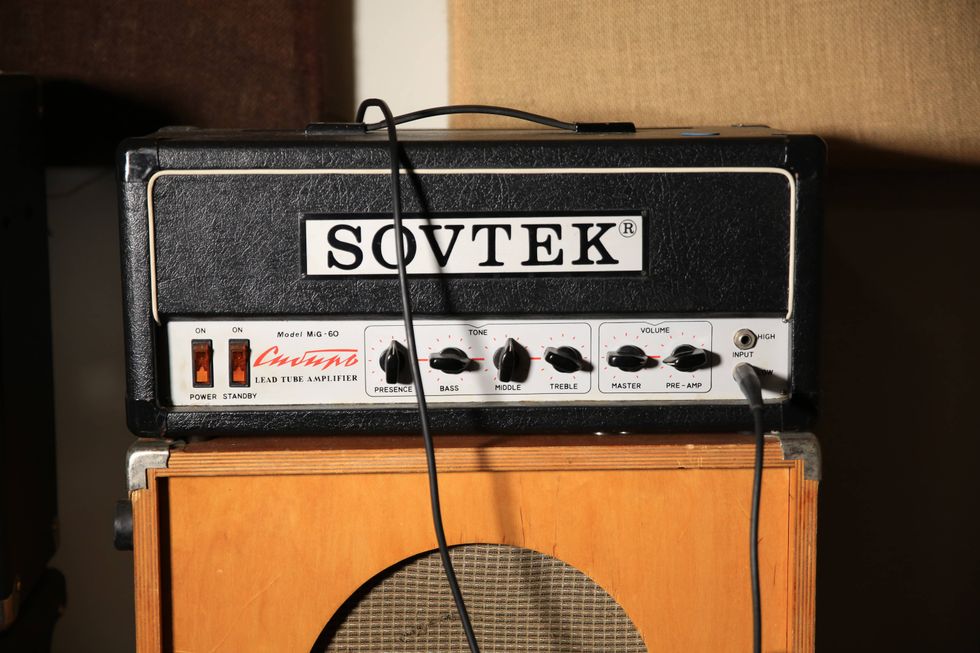 Zach loves his Sovtek Mig 60 head, which he plays through a cab he built himself at a pipe-organ shop in Denver. Every glue joint is lined with thin leather for maximum air tightness, and it’s stocked with Celestion G12M Greenback speakers.
Zach loves his Sovtek Mig 60 head, which he plays through a cab he built himself at a pipe-organ shop in Denver. Every glue joint is lined with thin leather for maximum air tightness, and it’s stocked with Celestion G12M Greenback speakers.